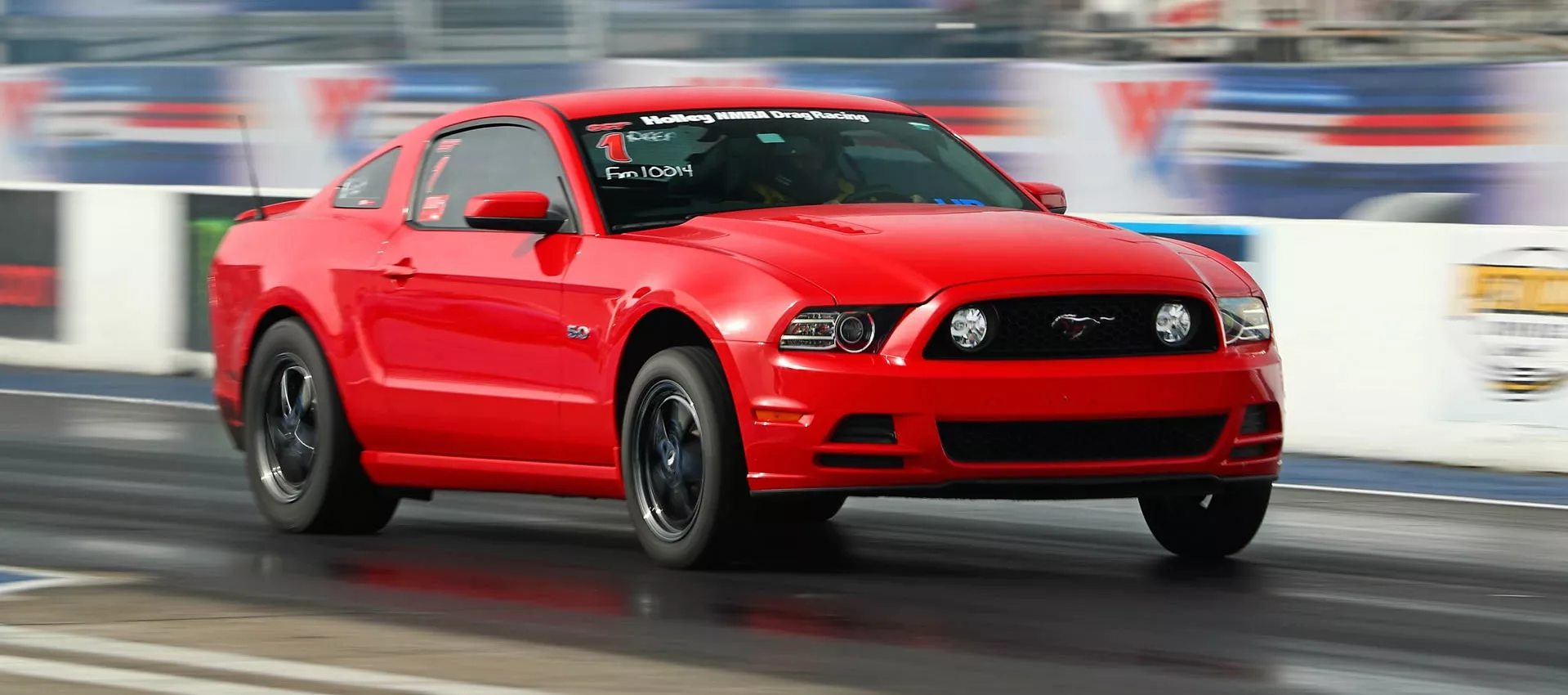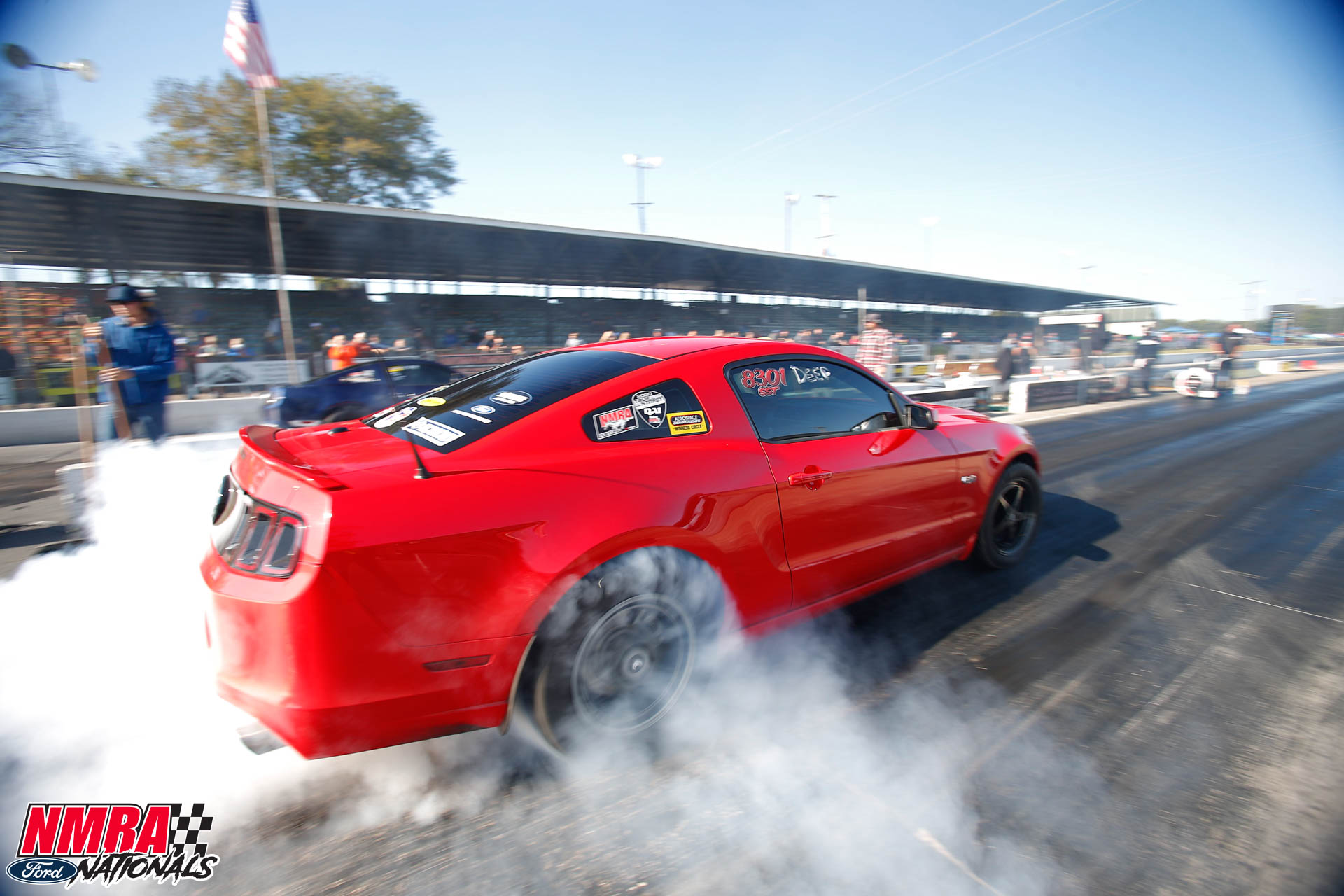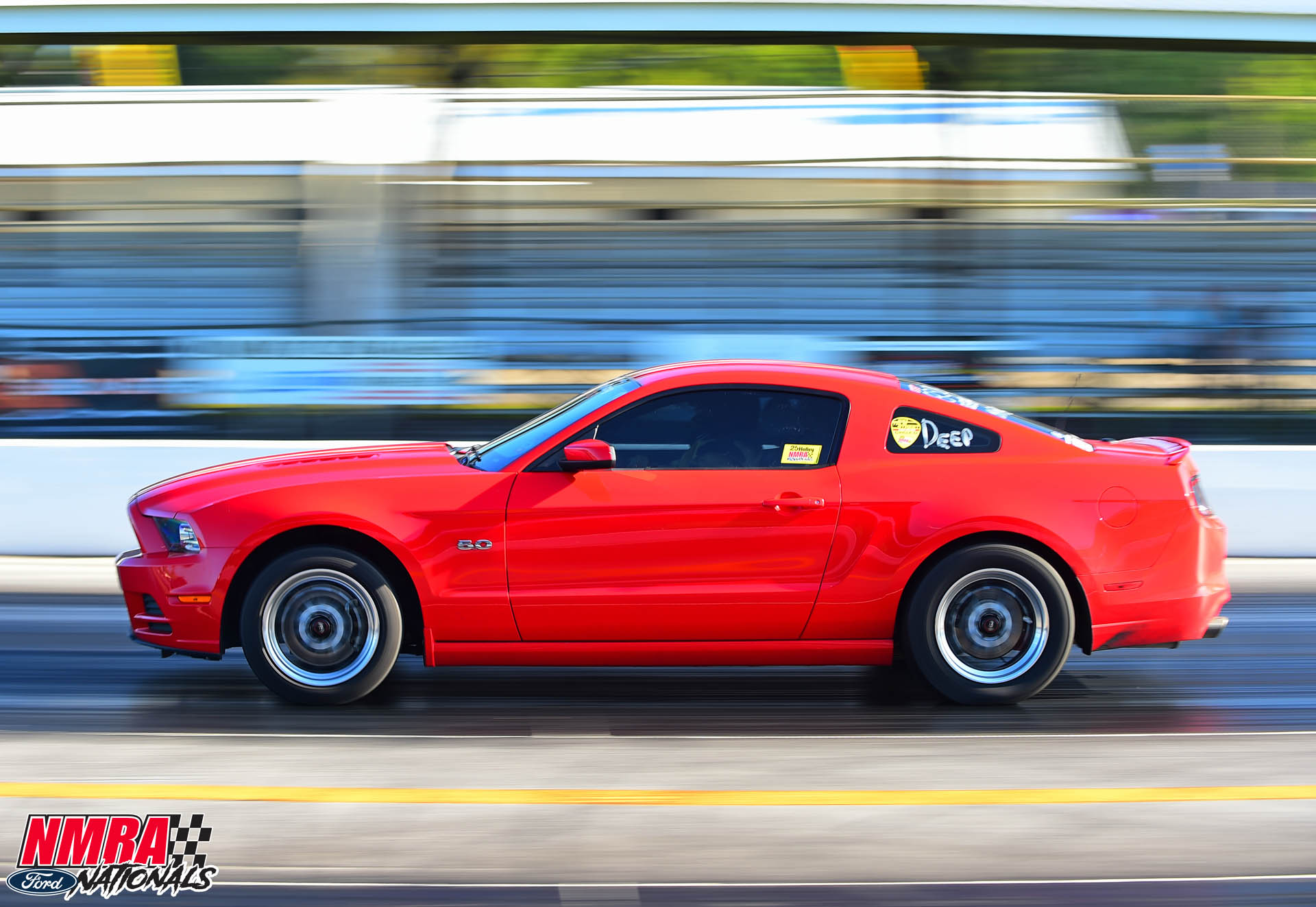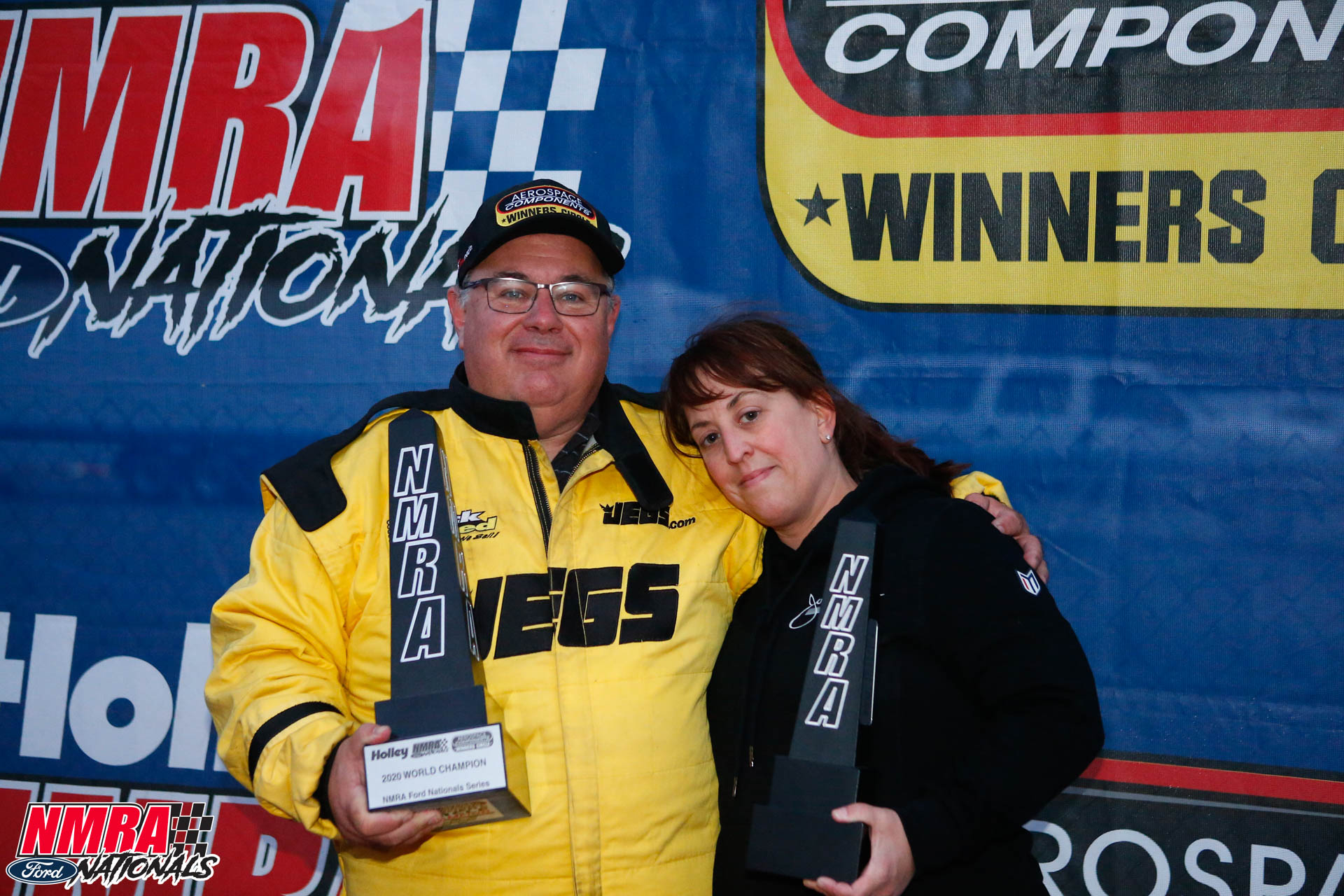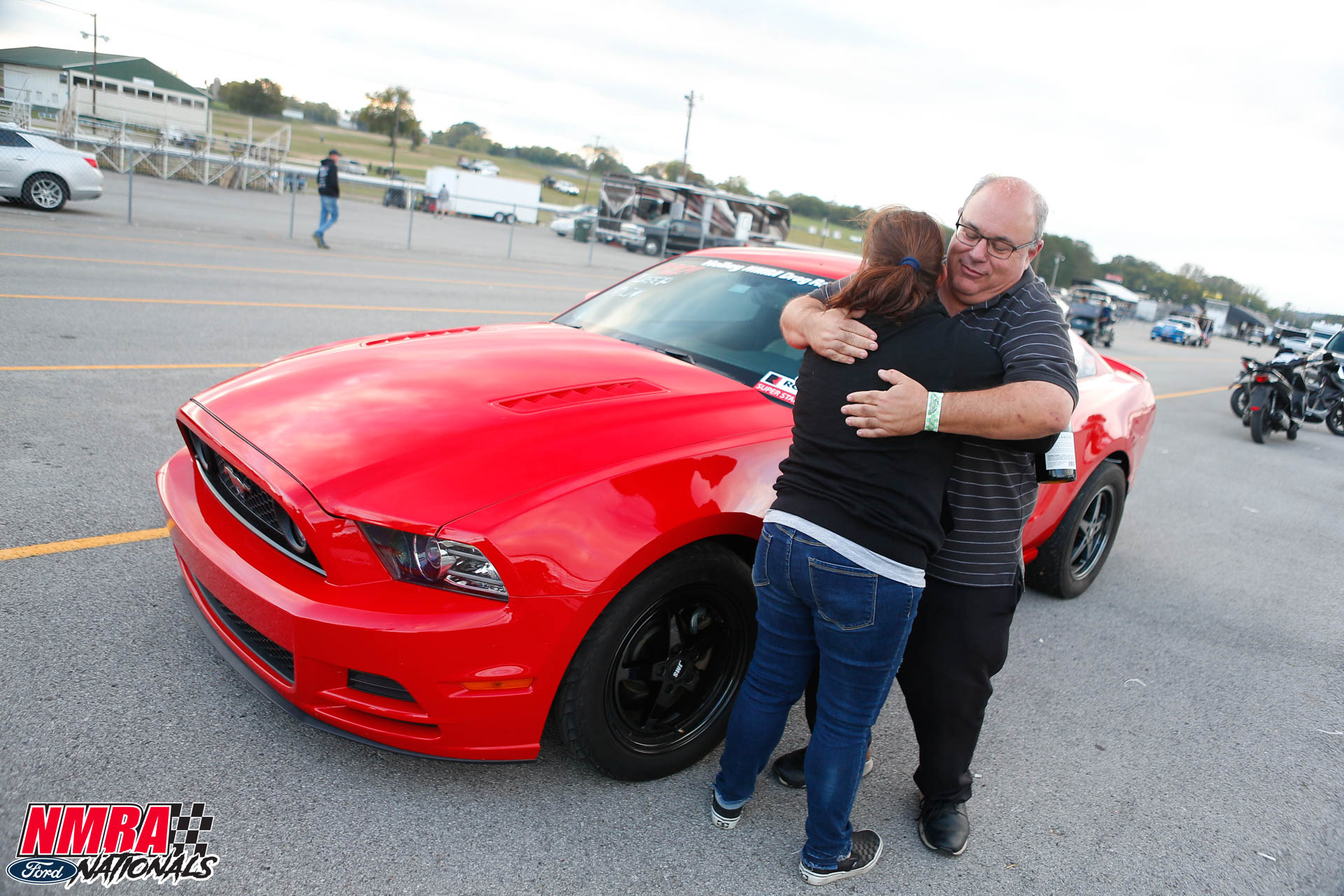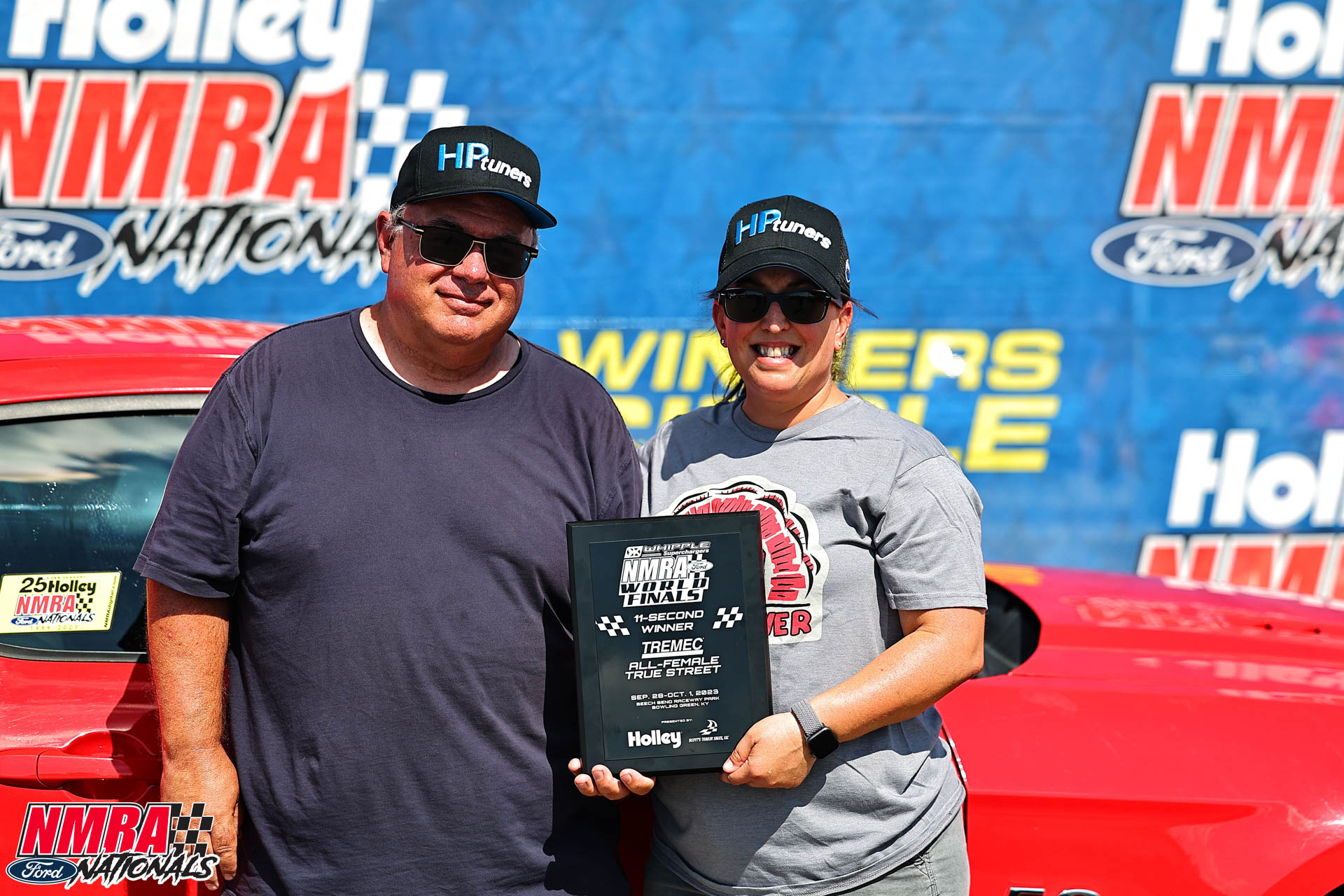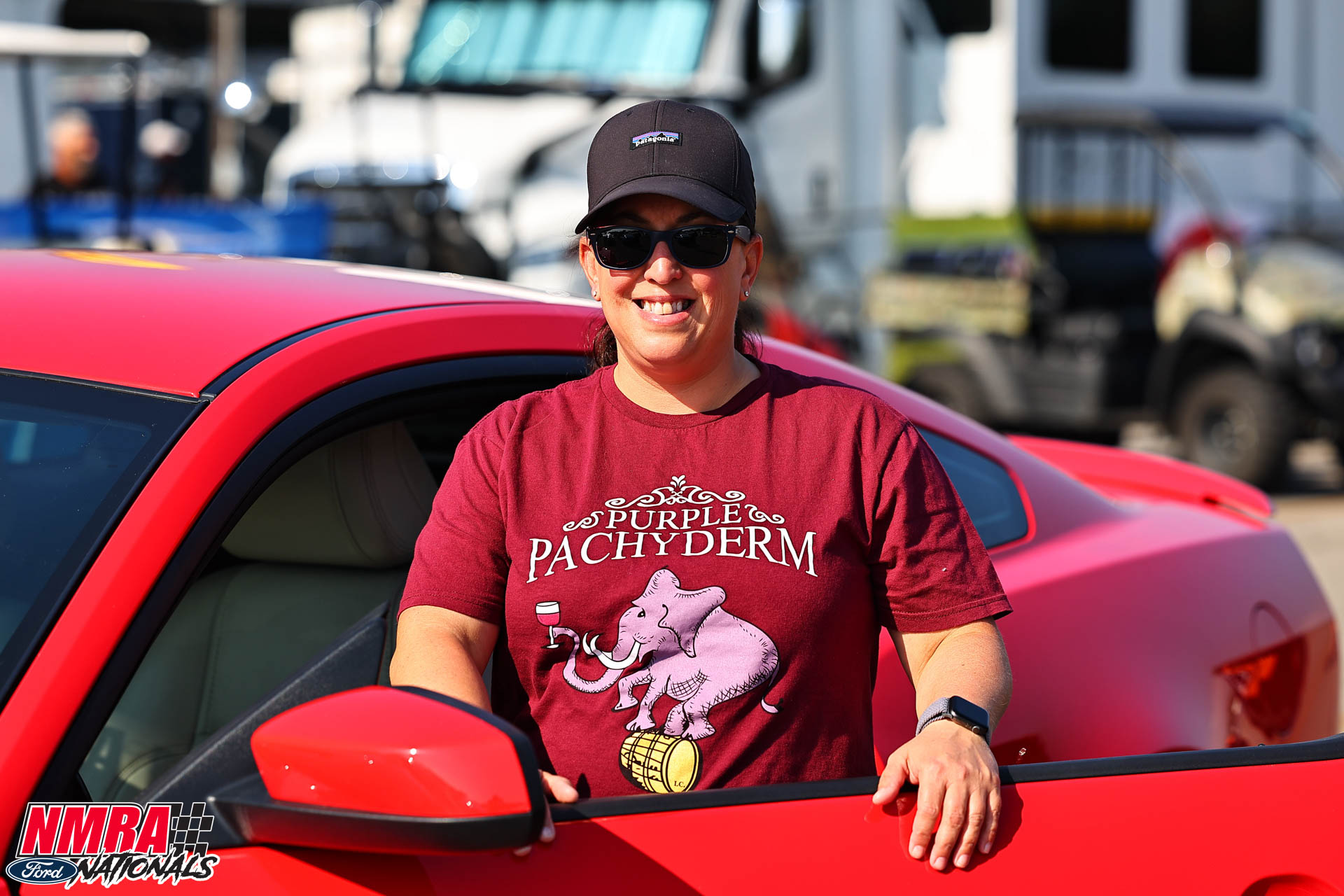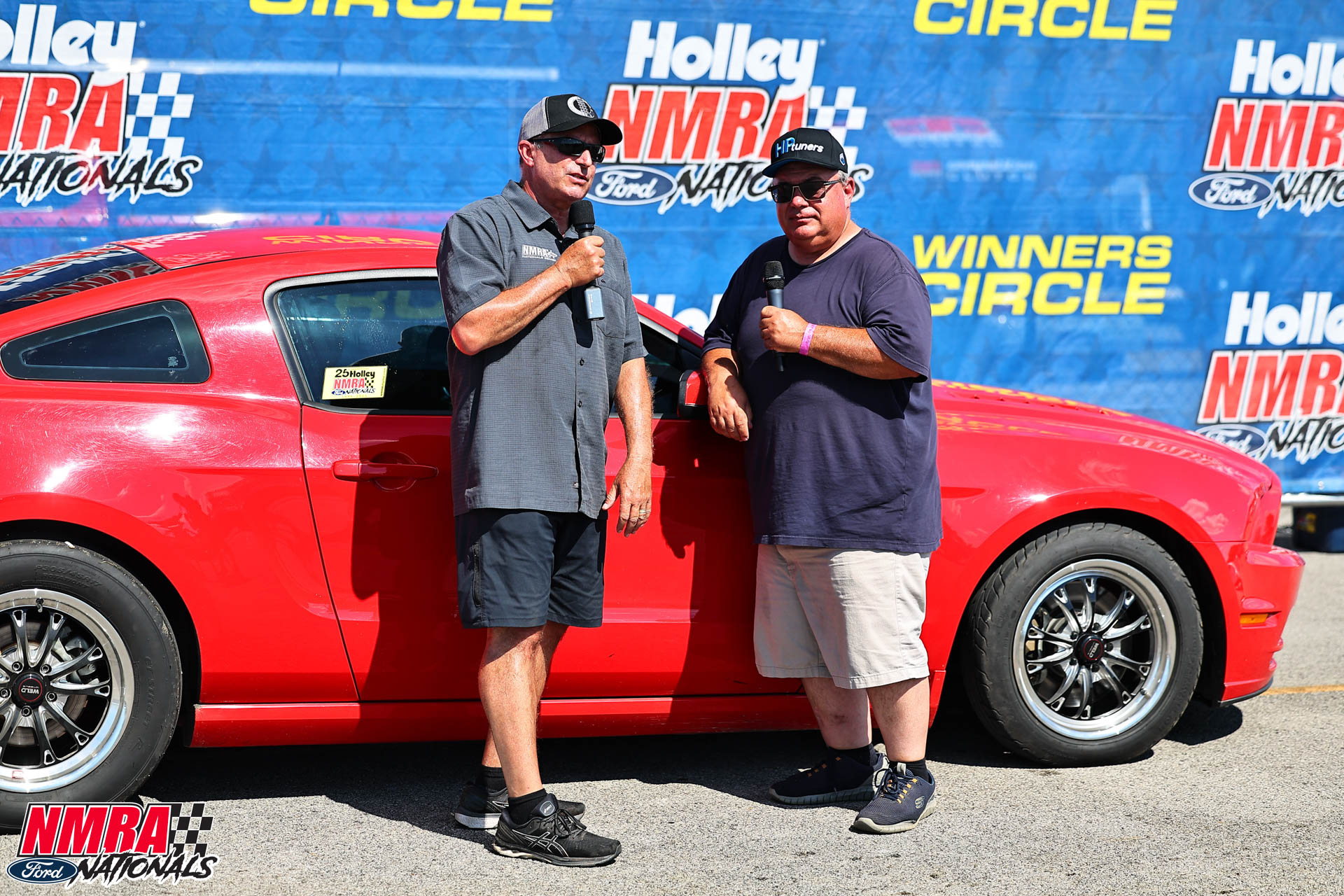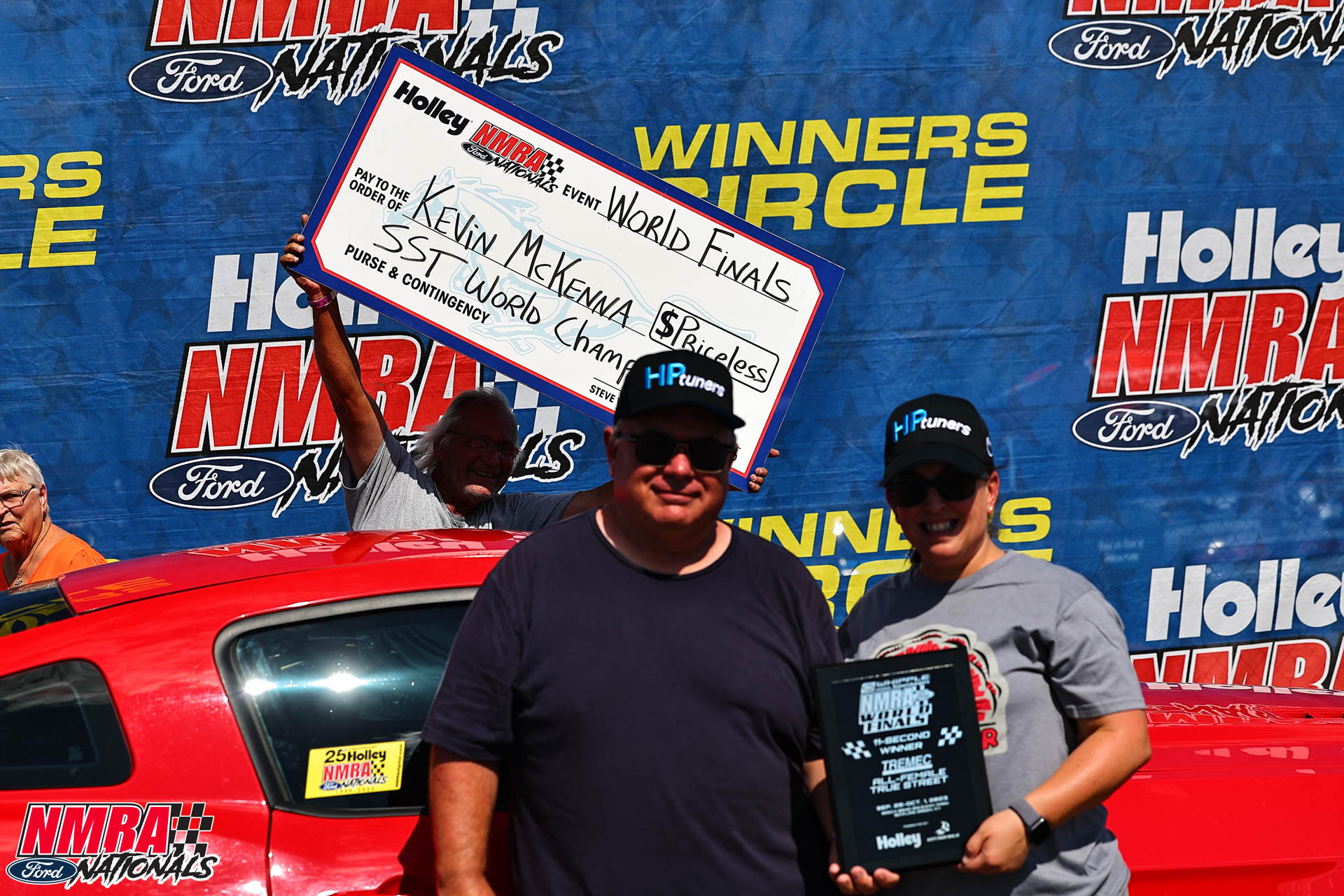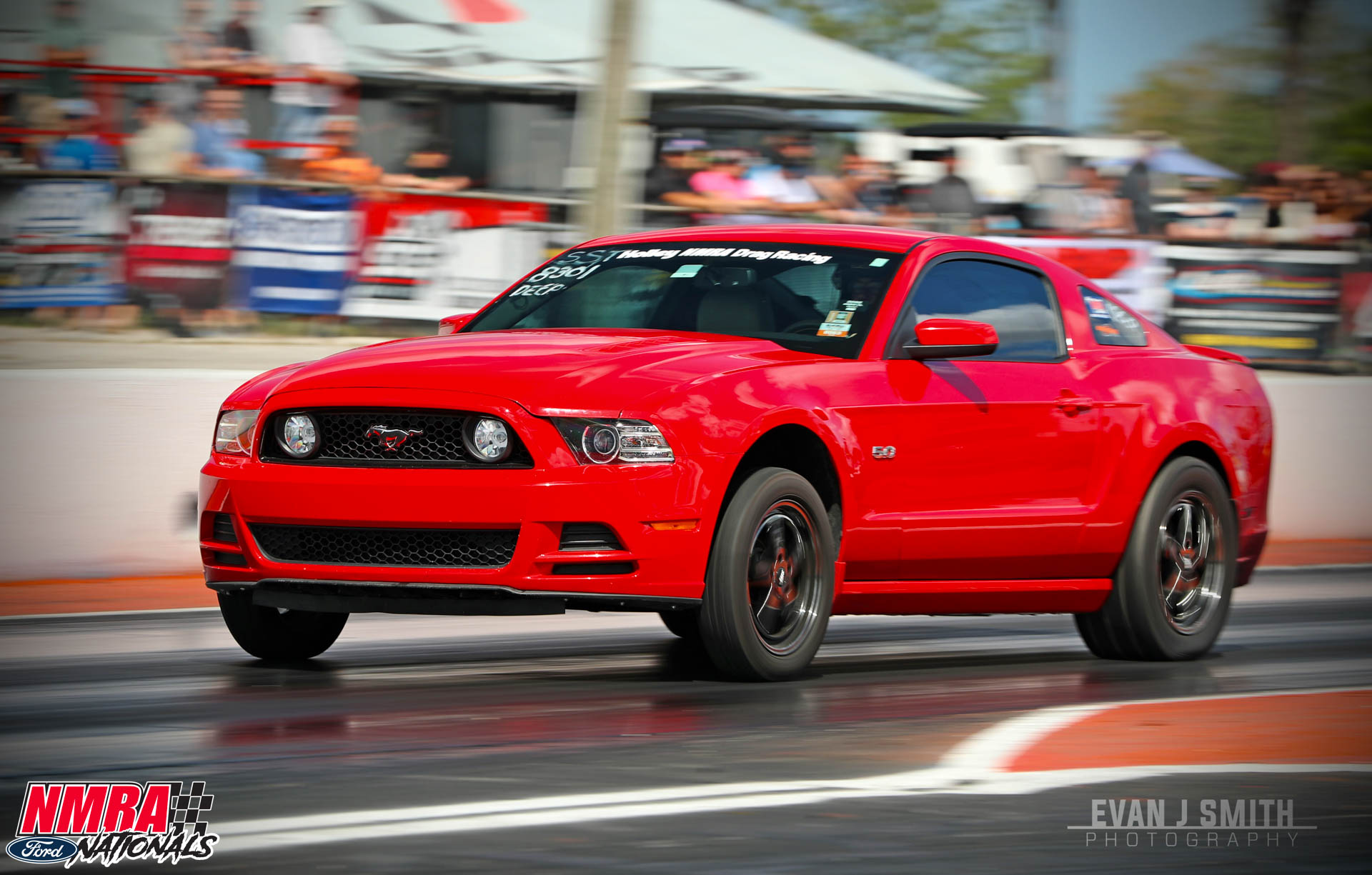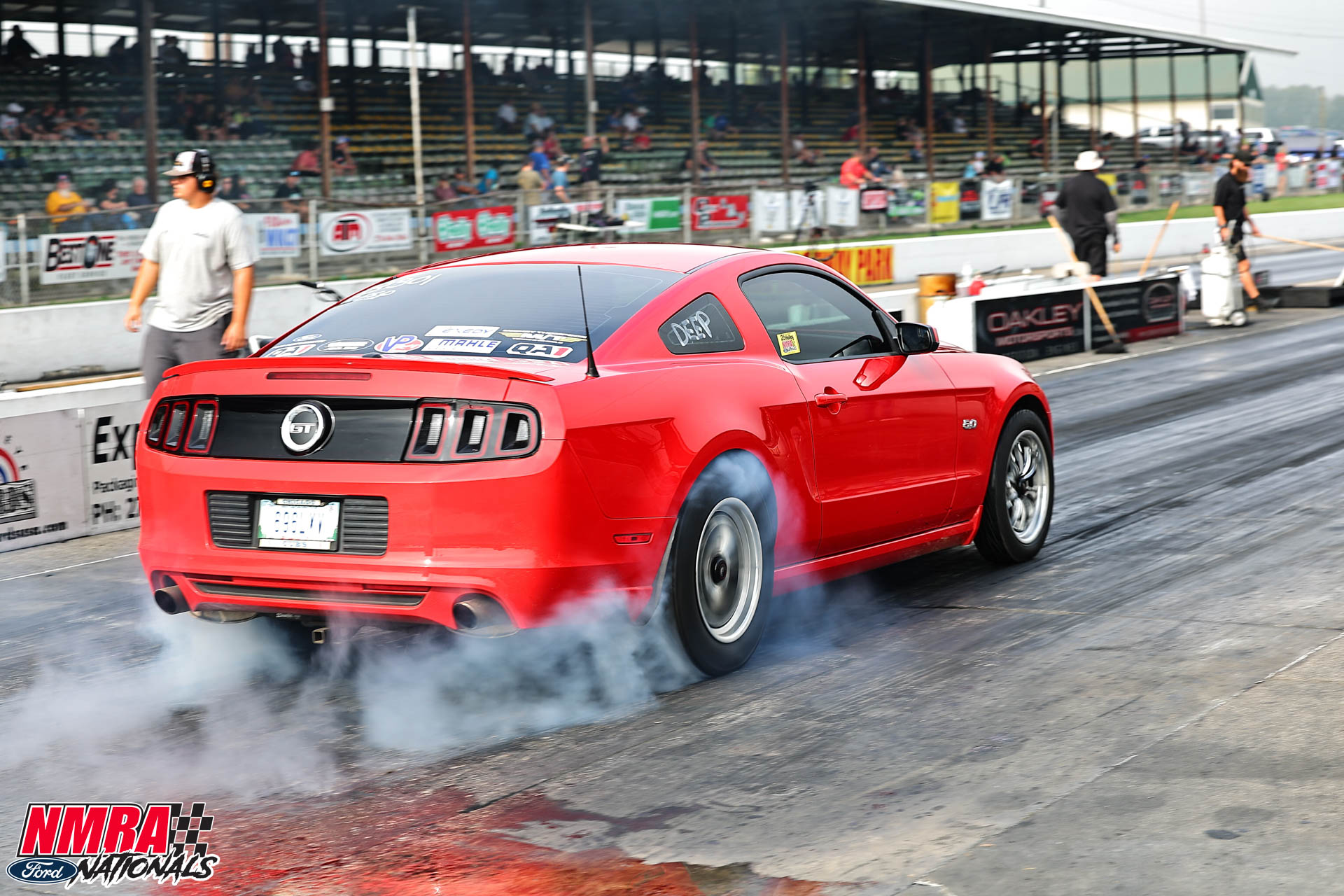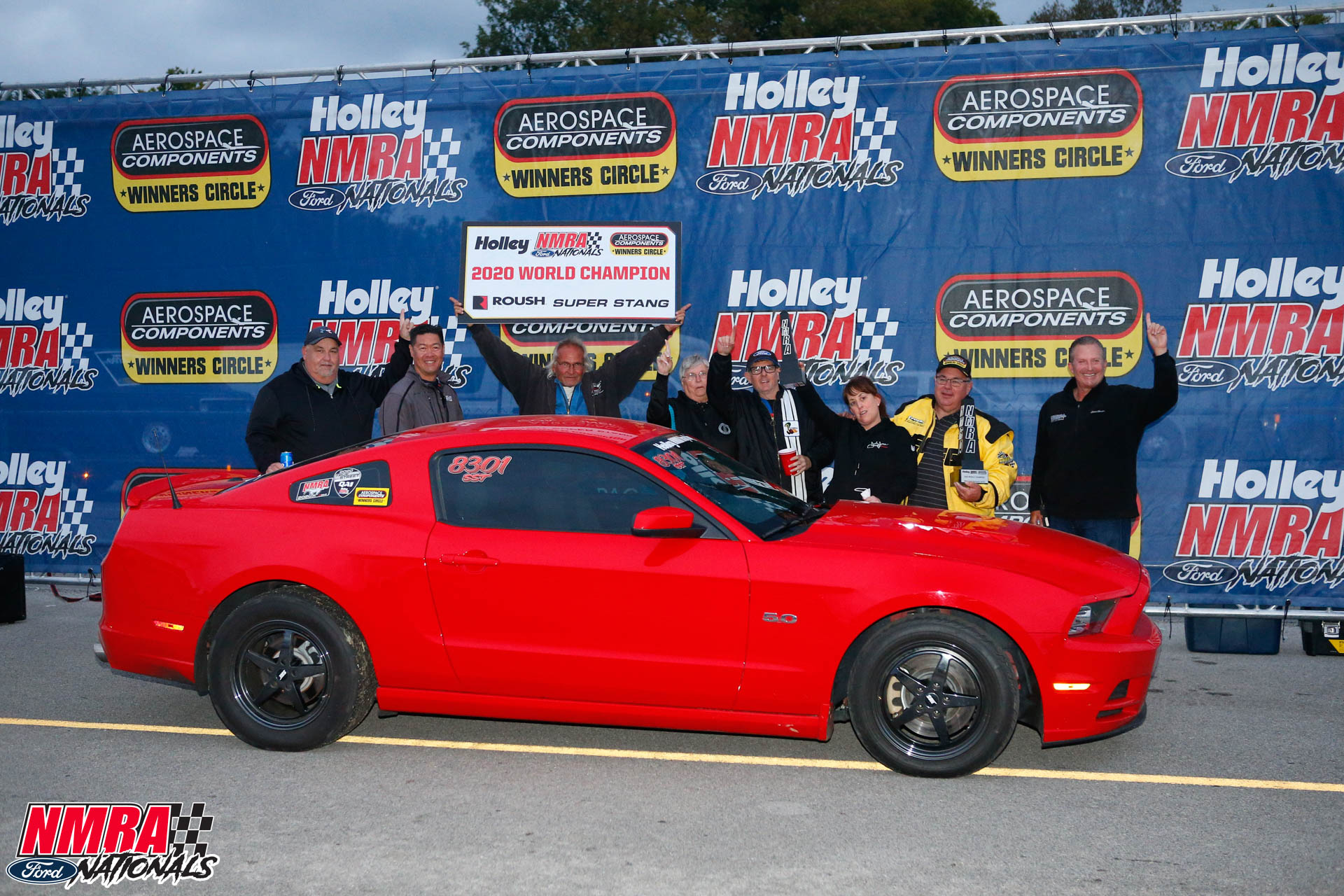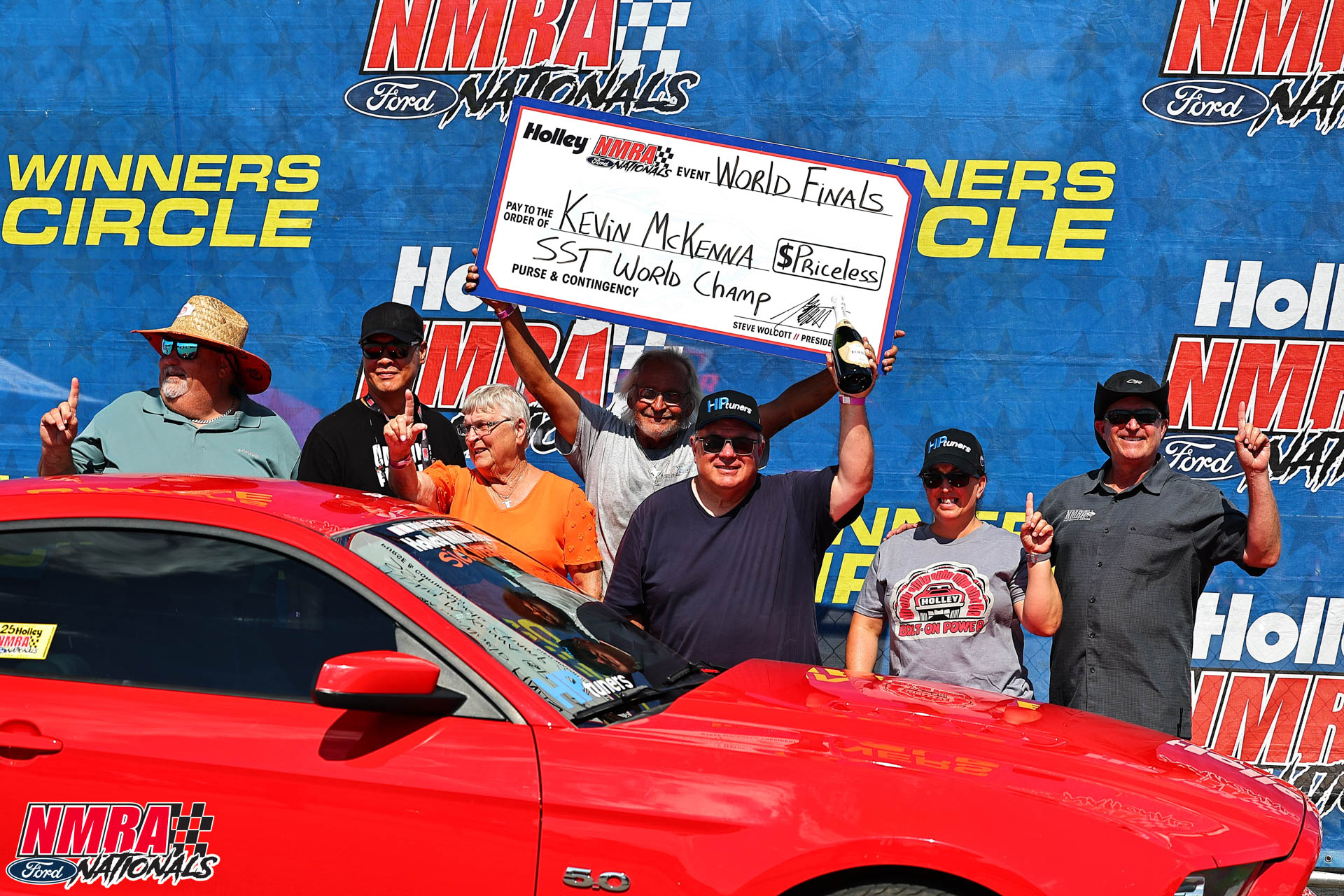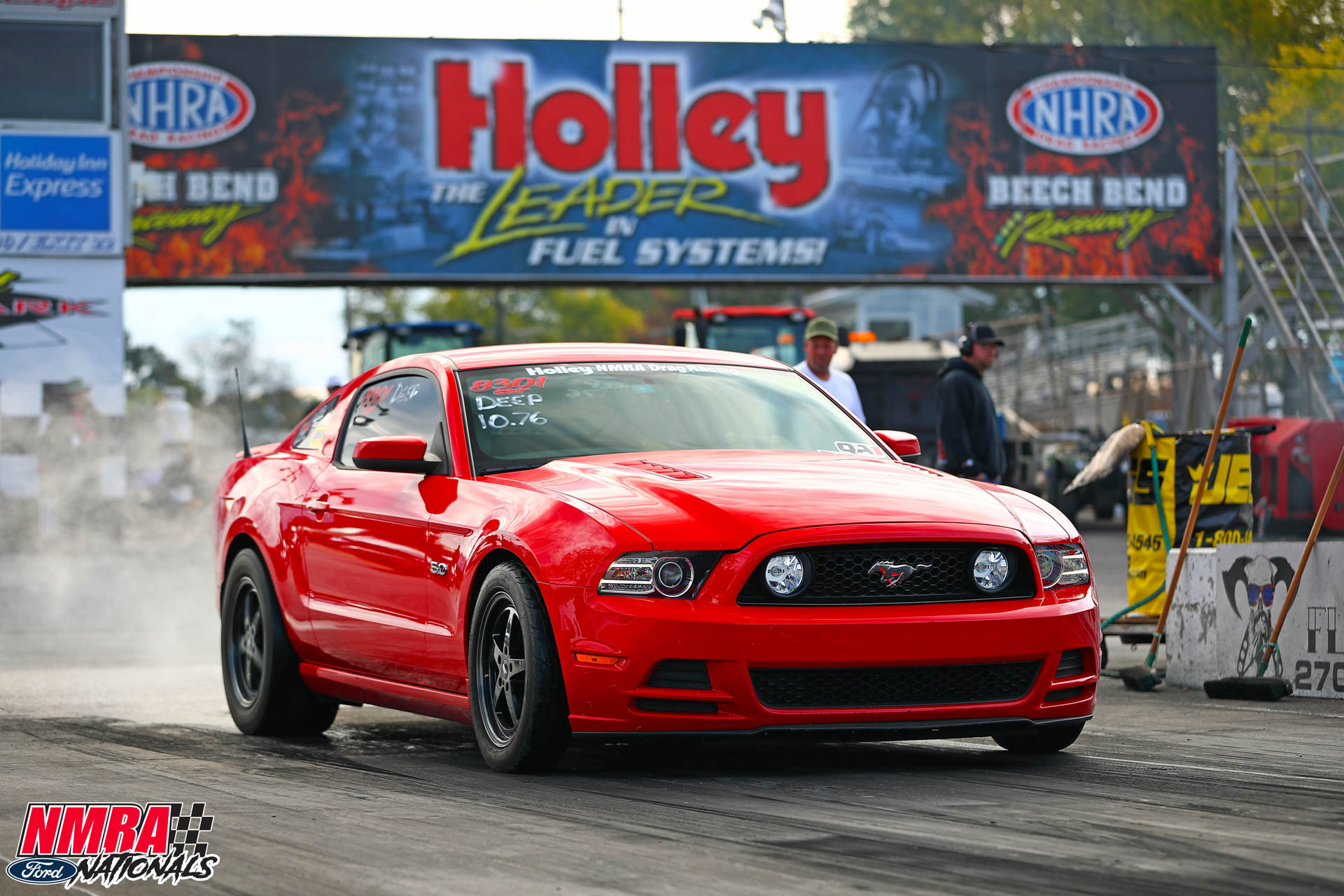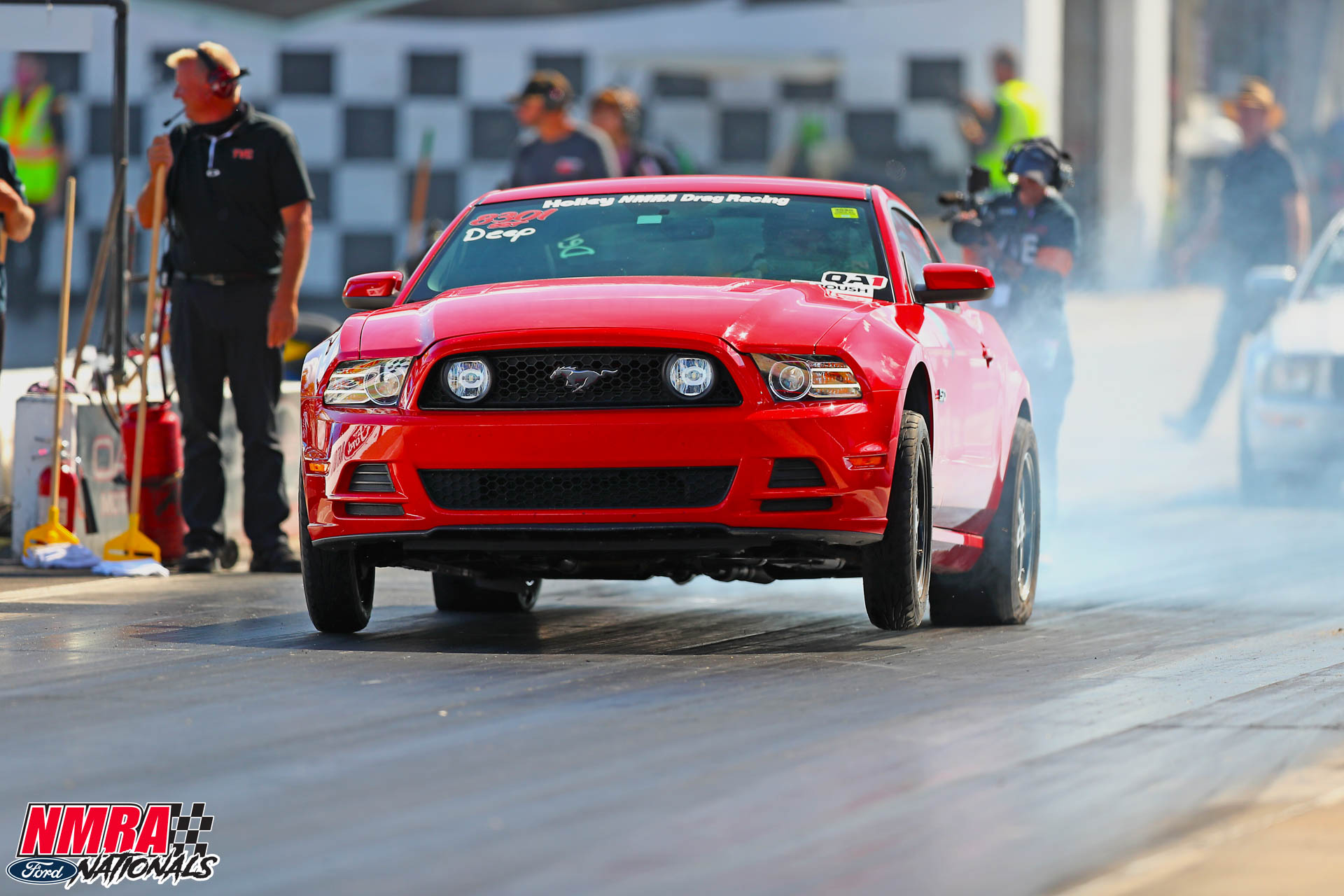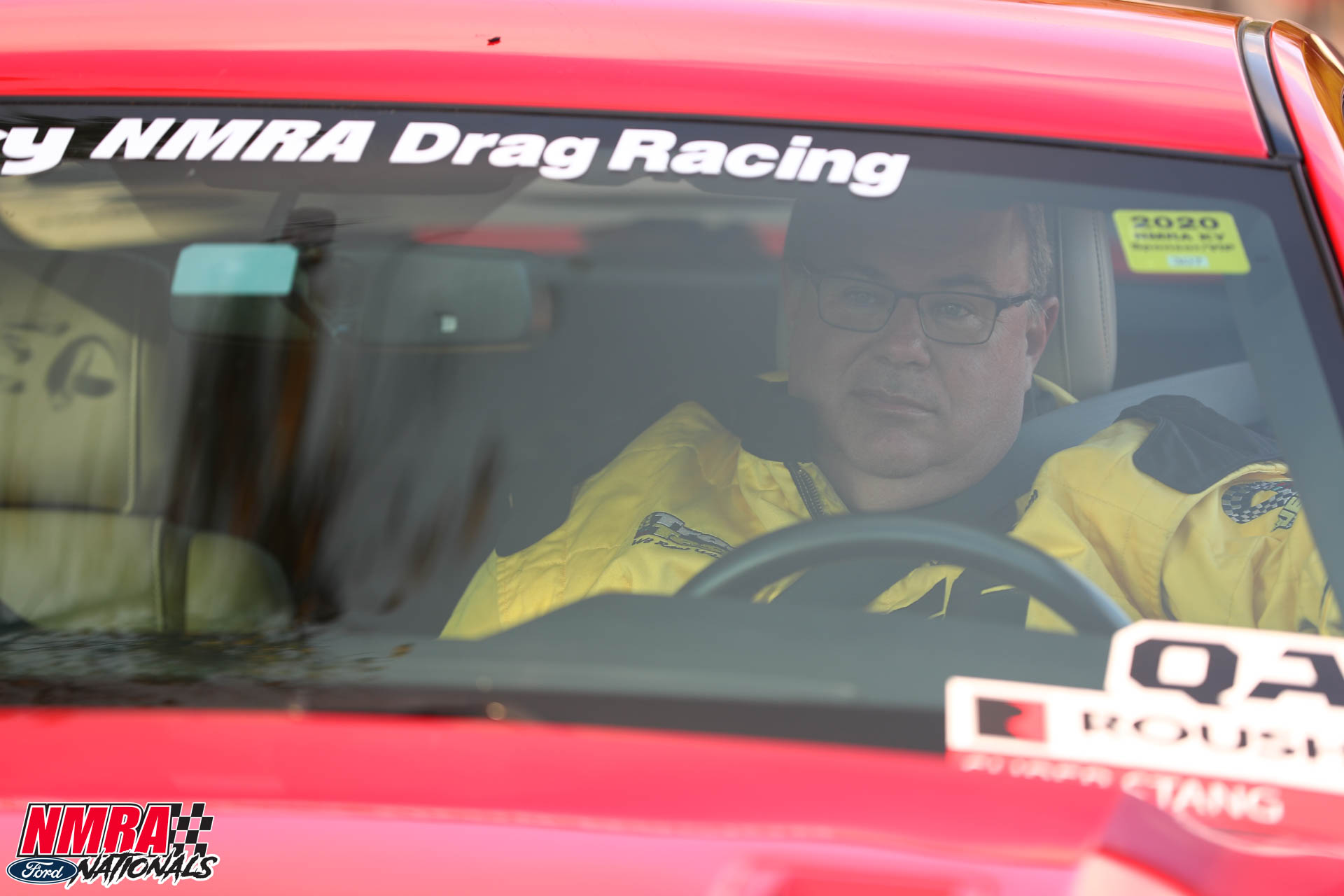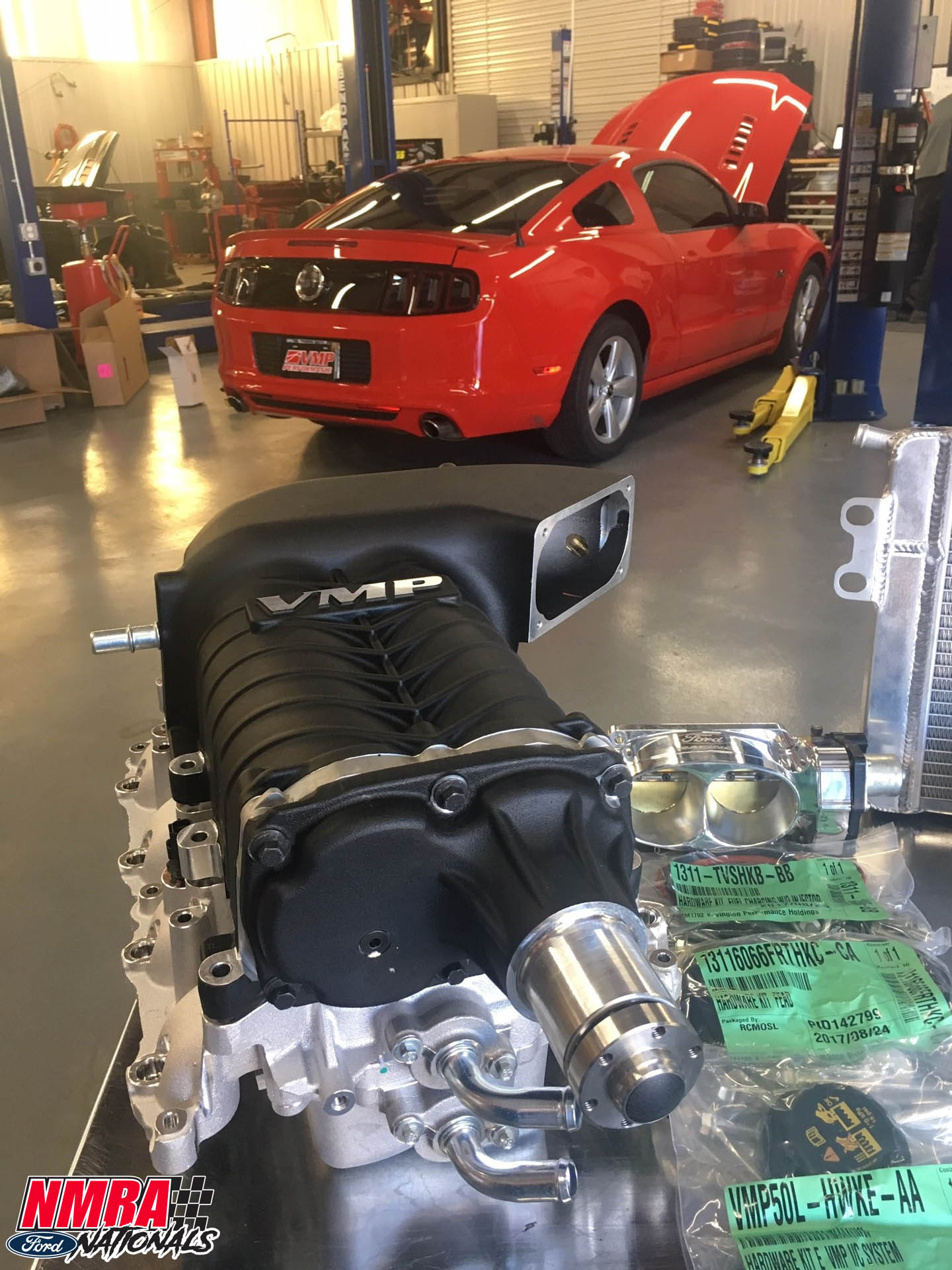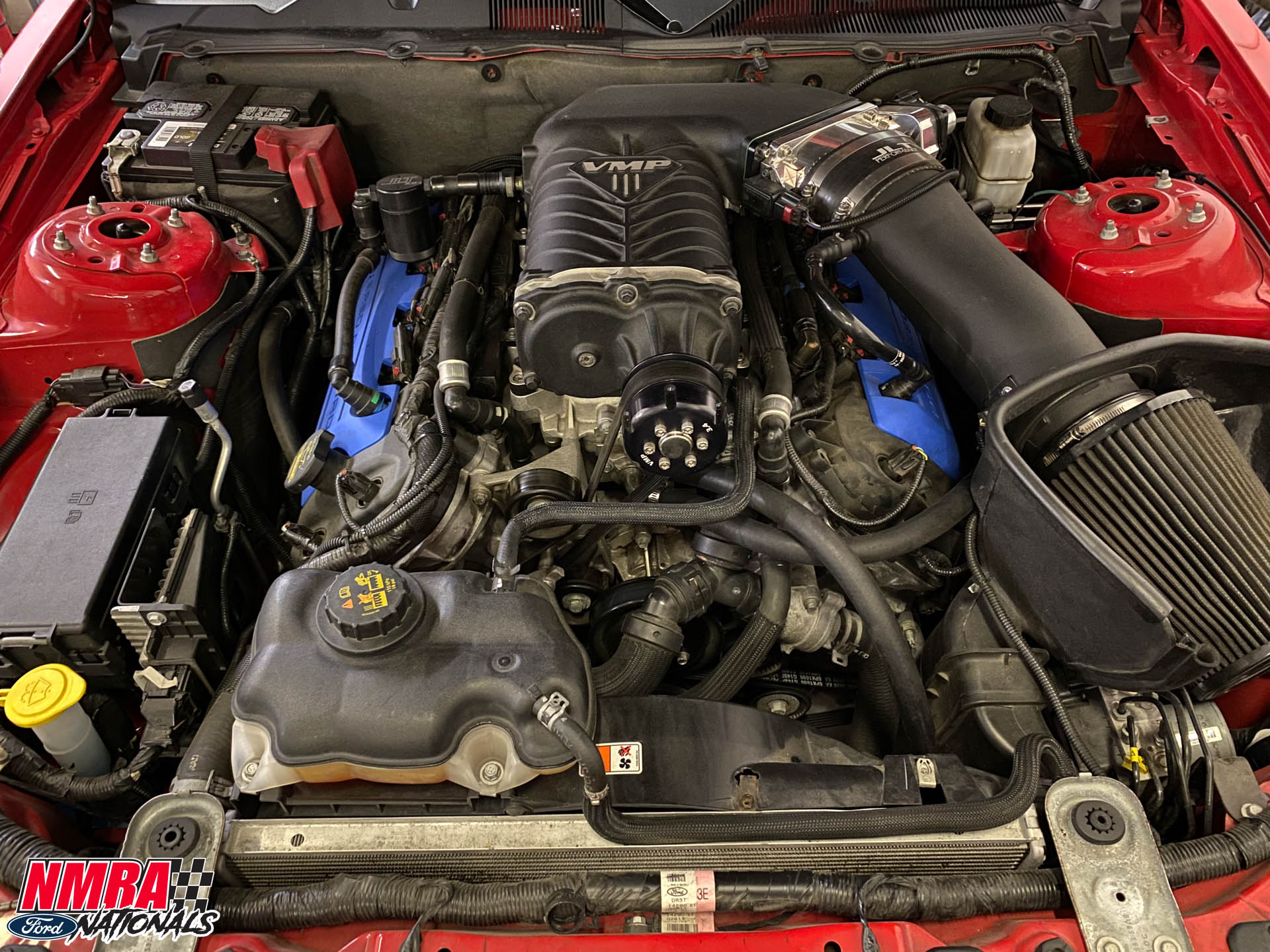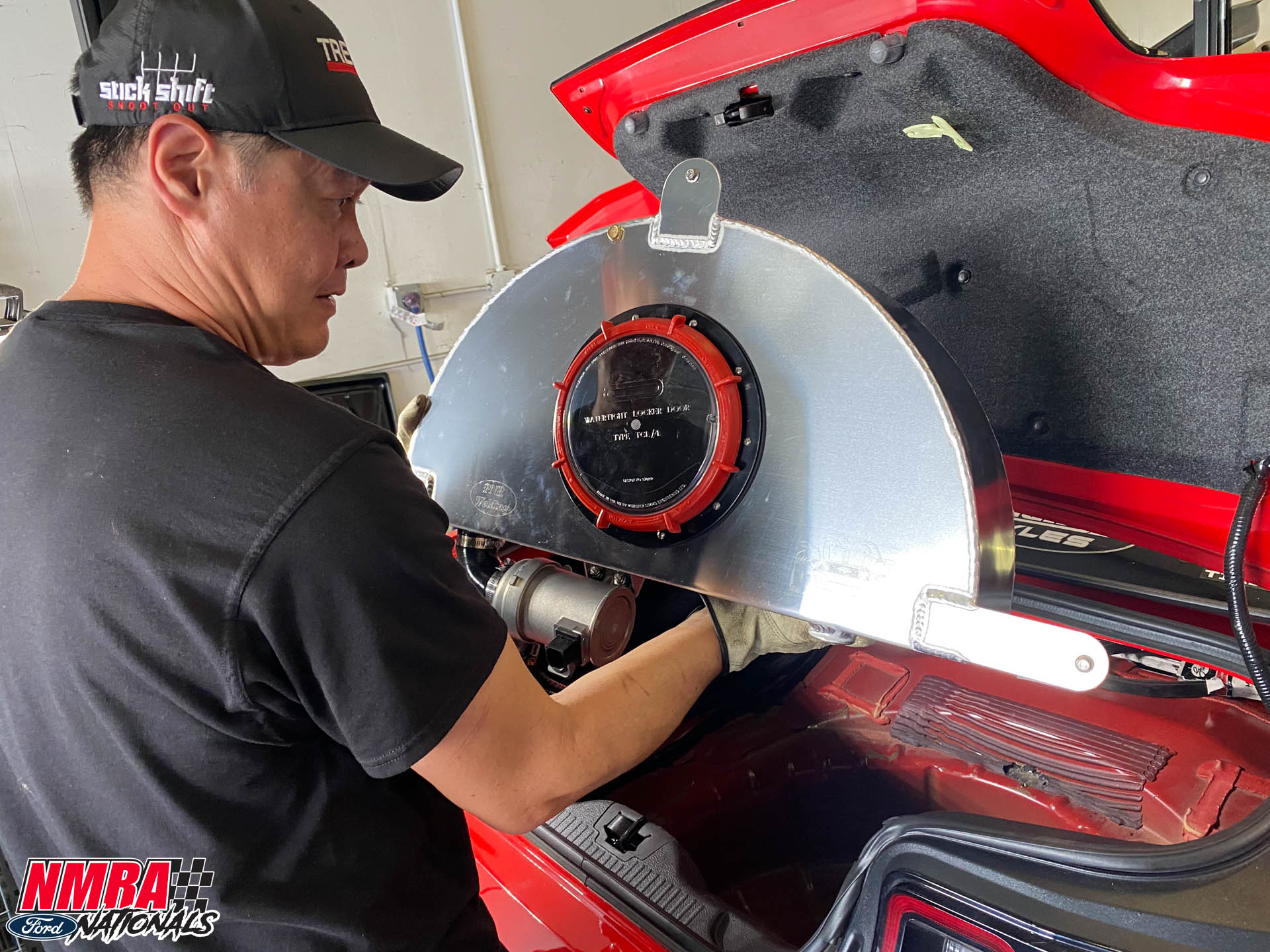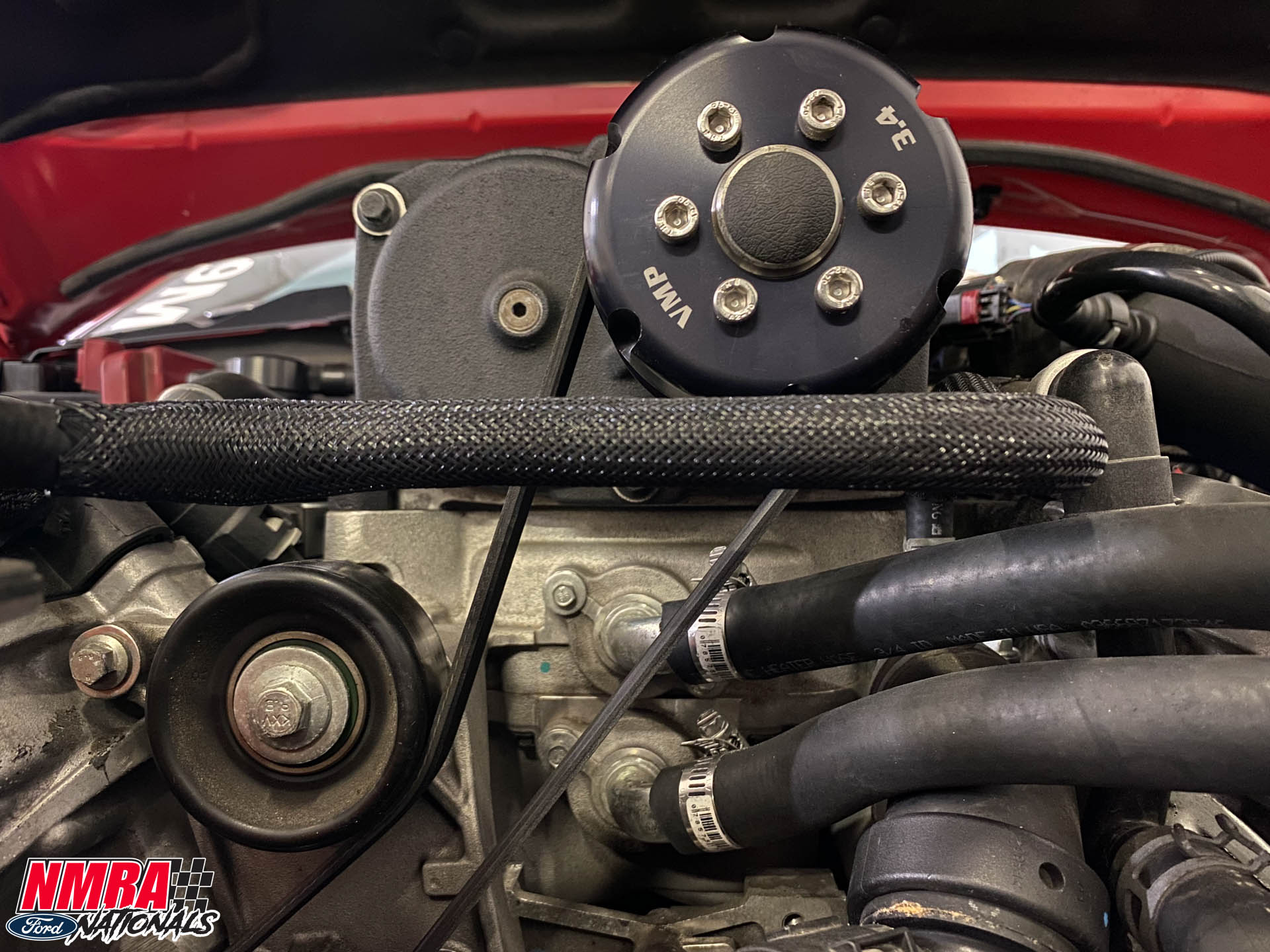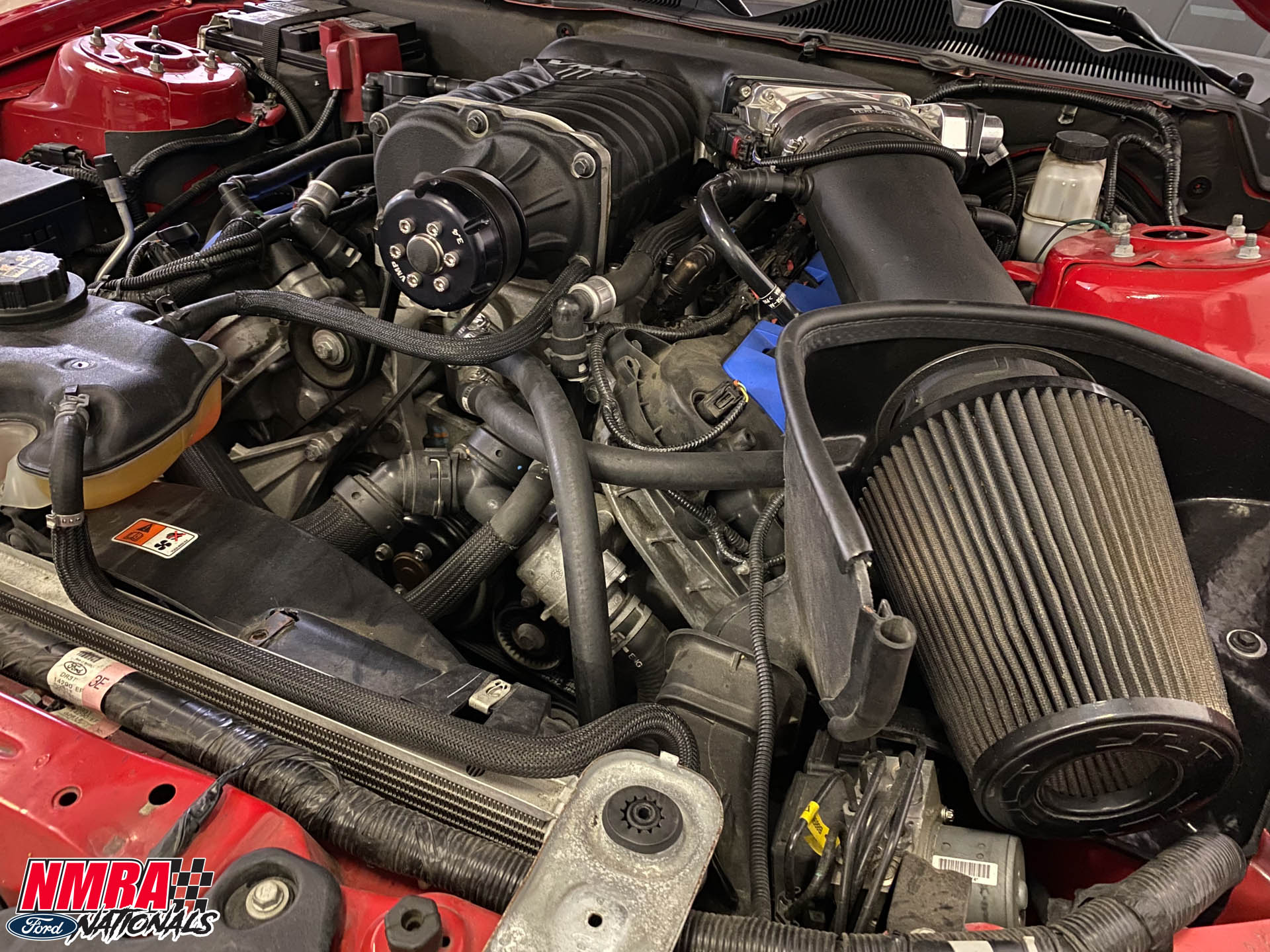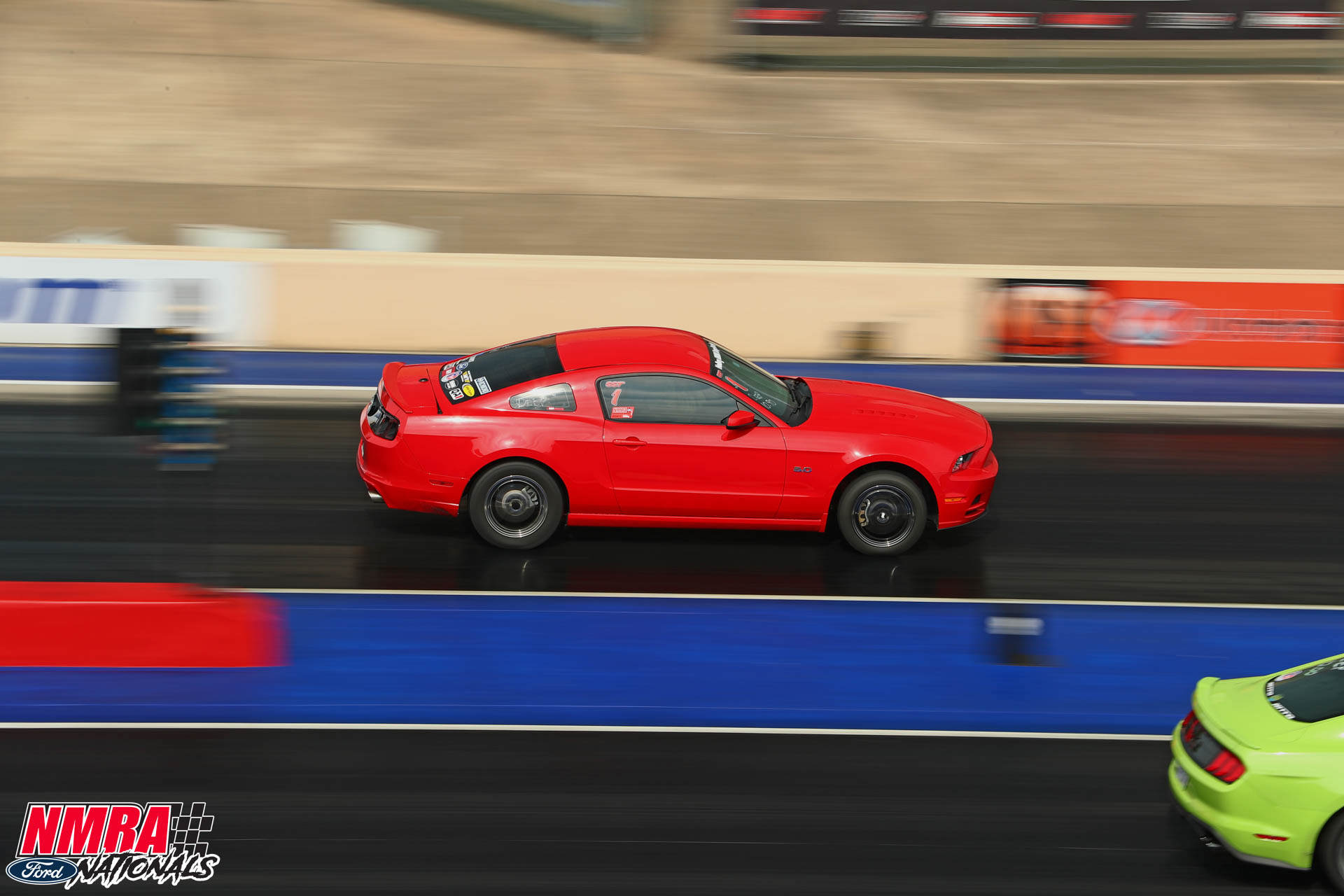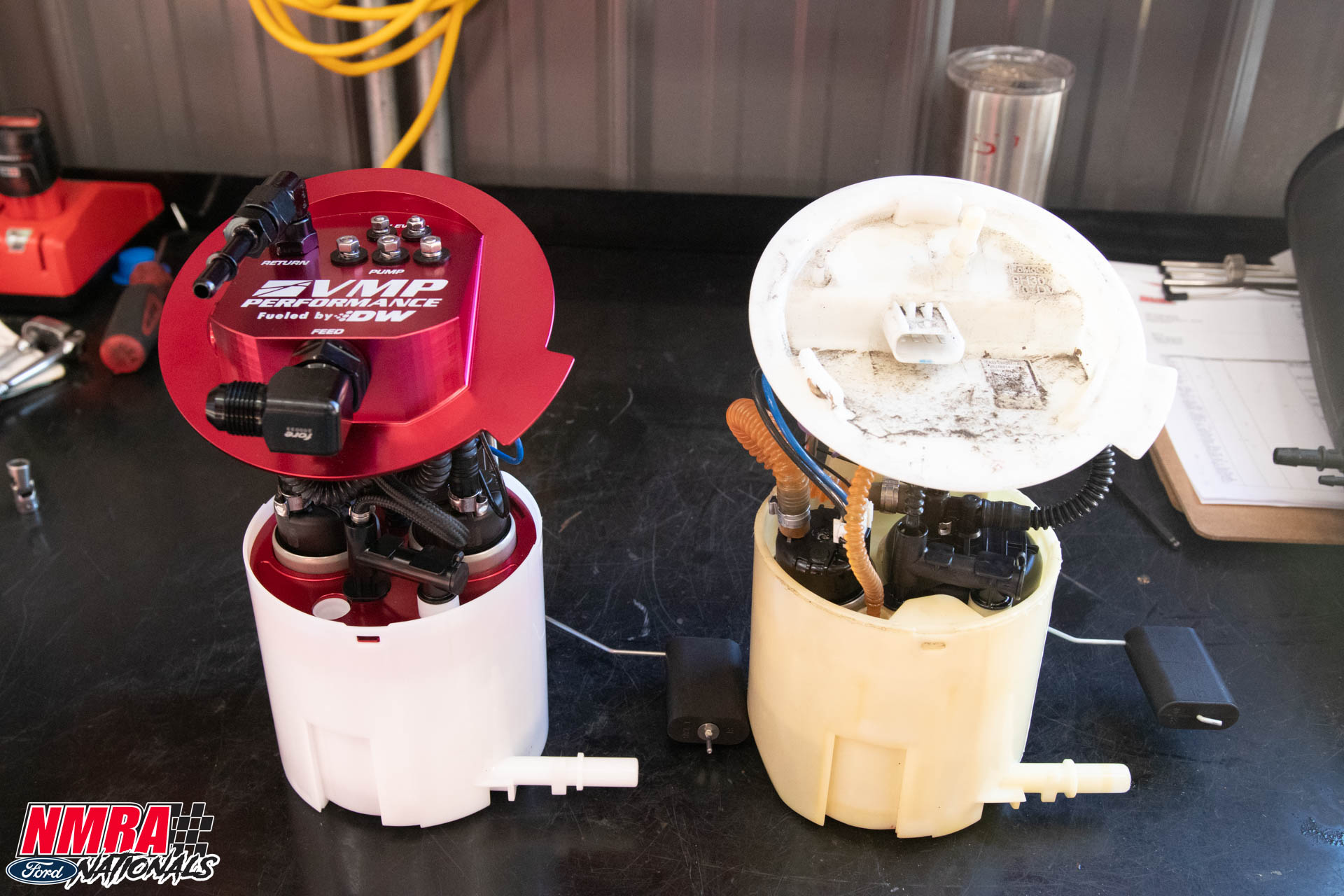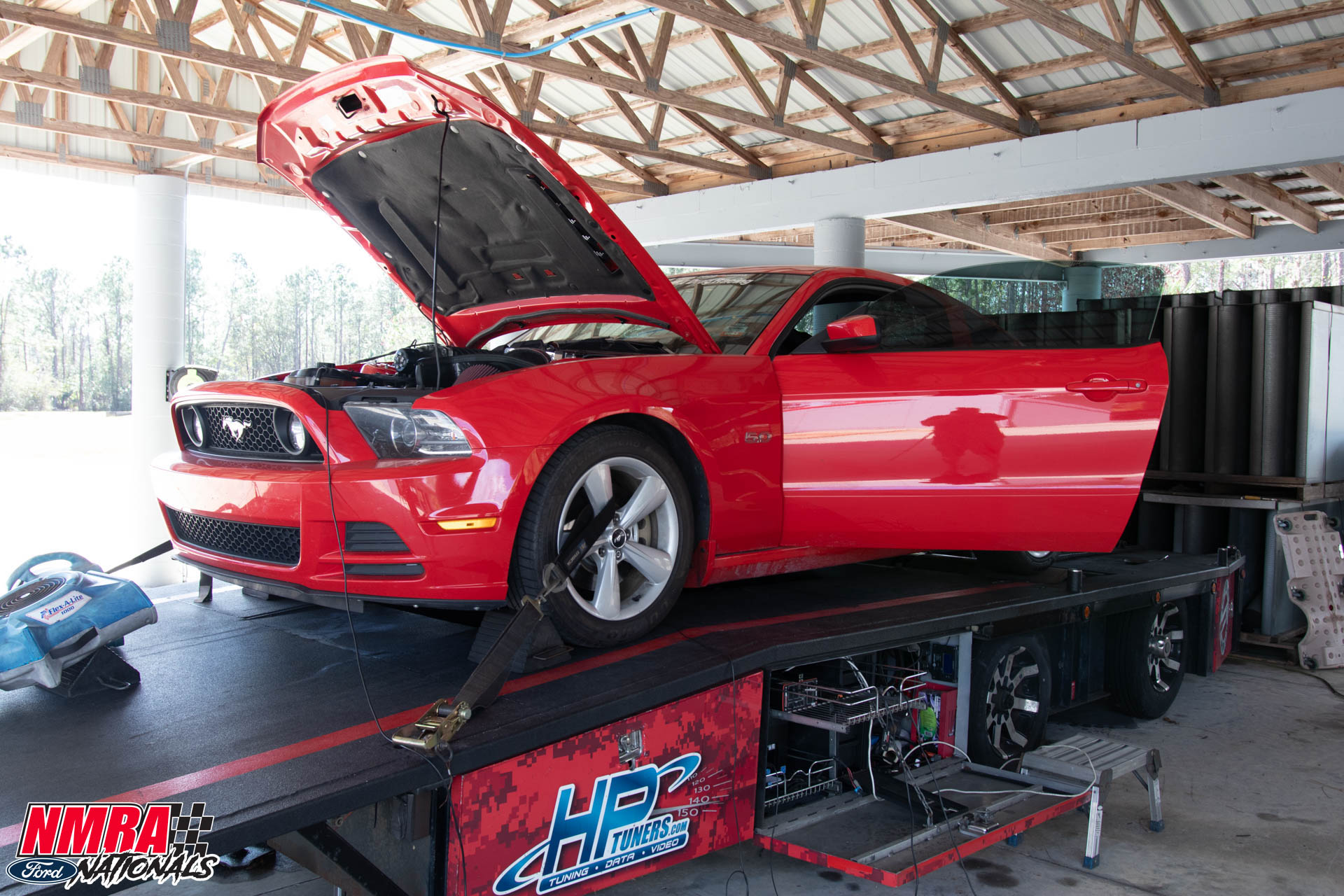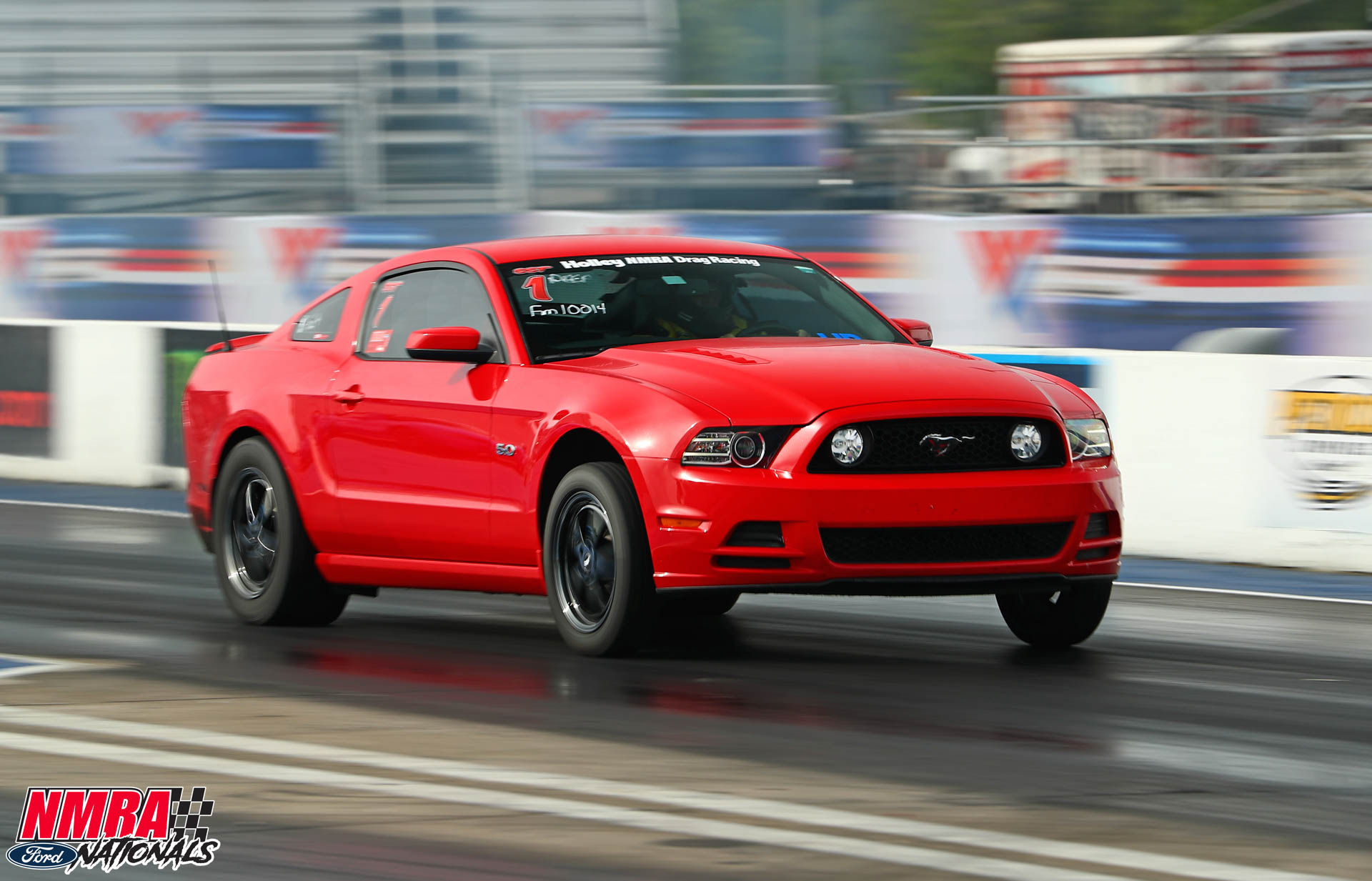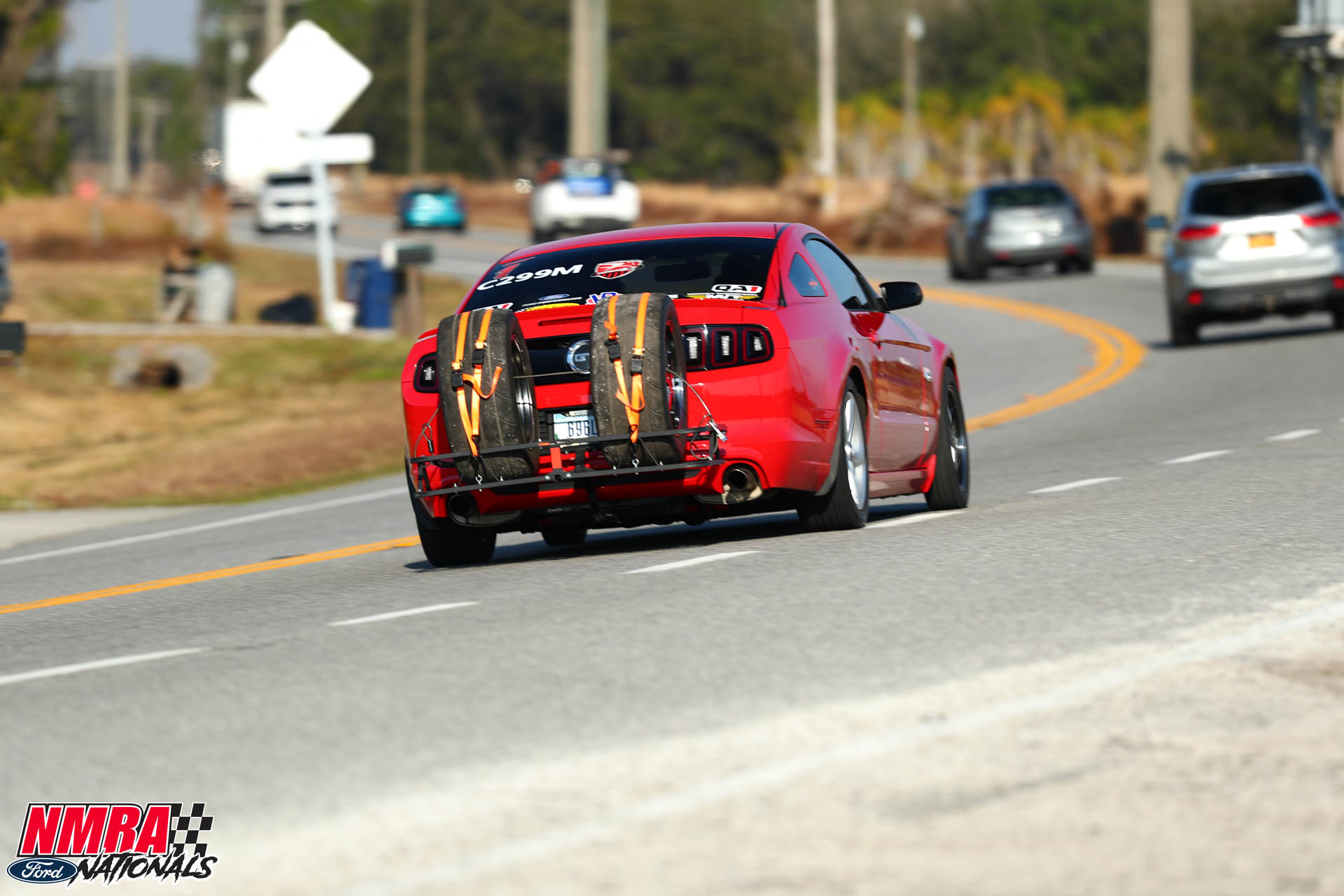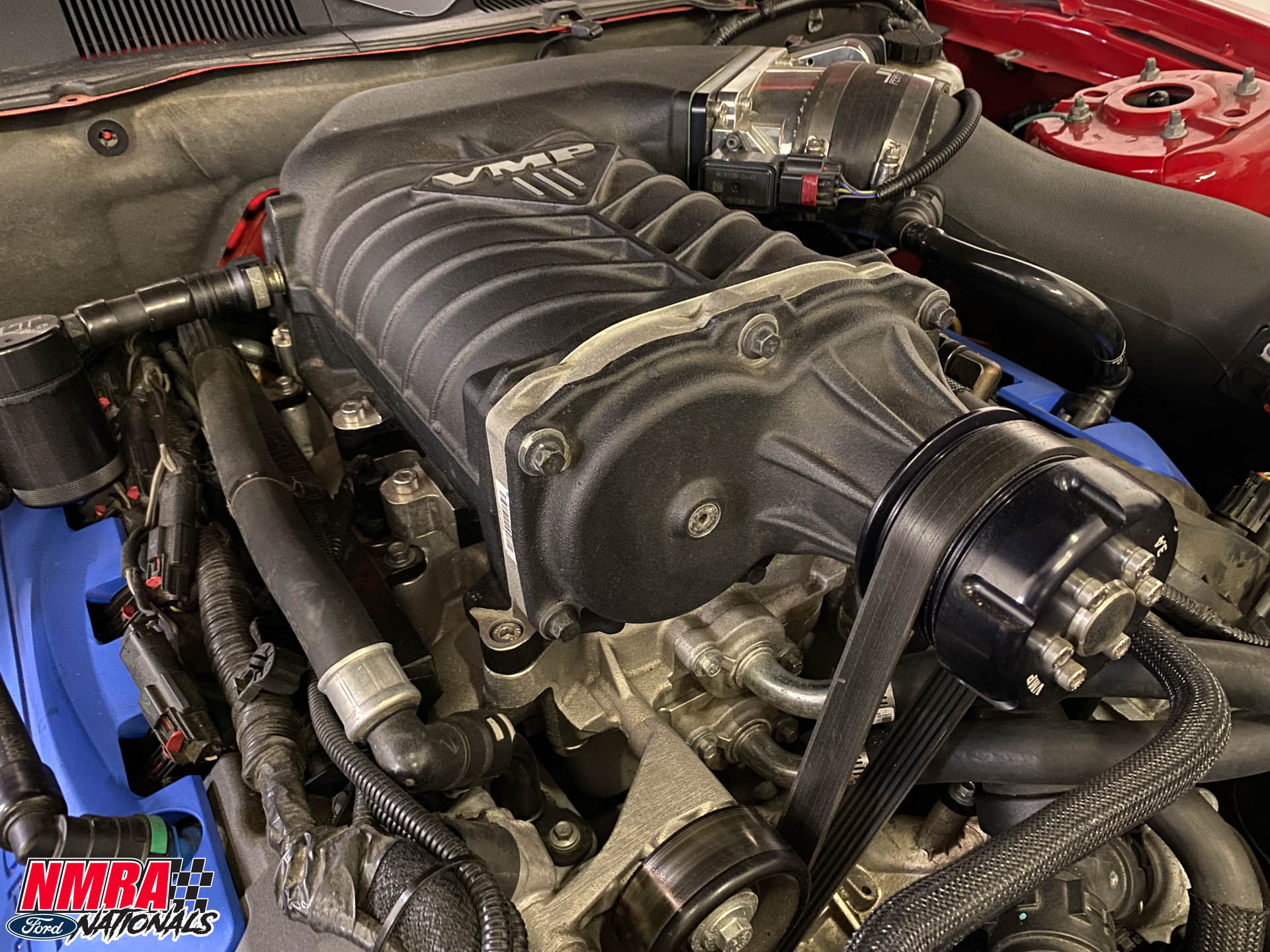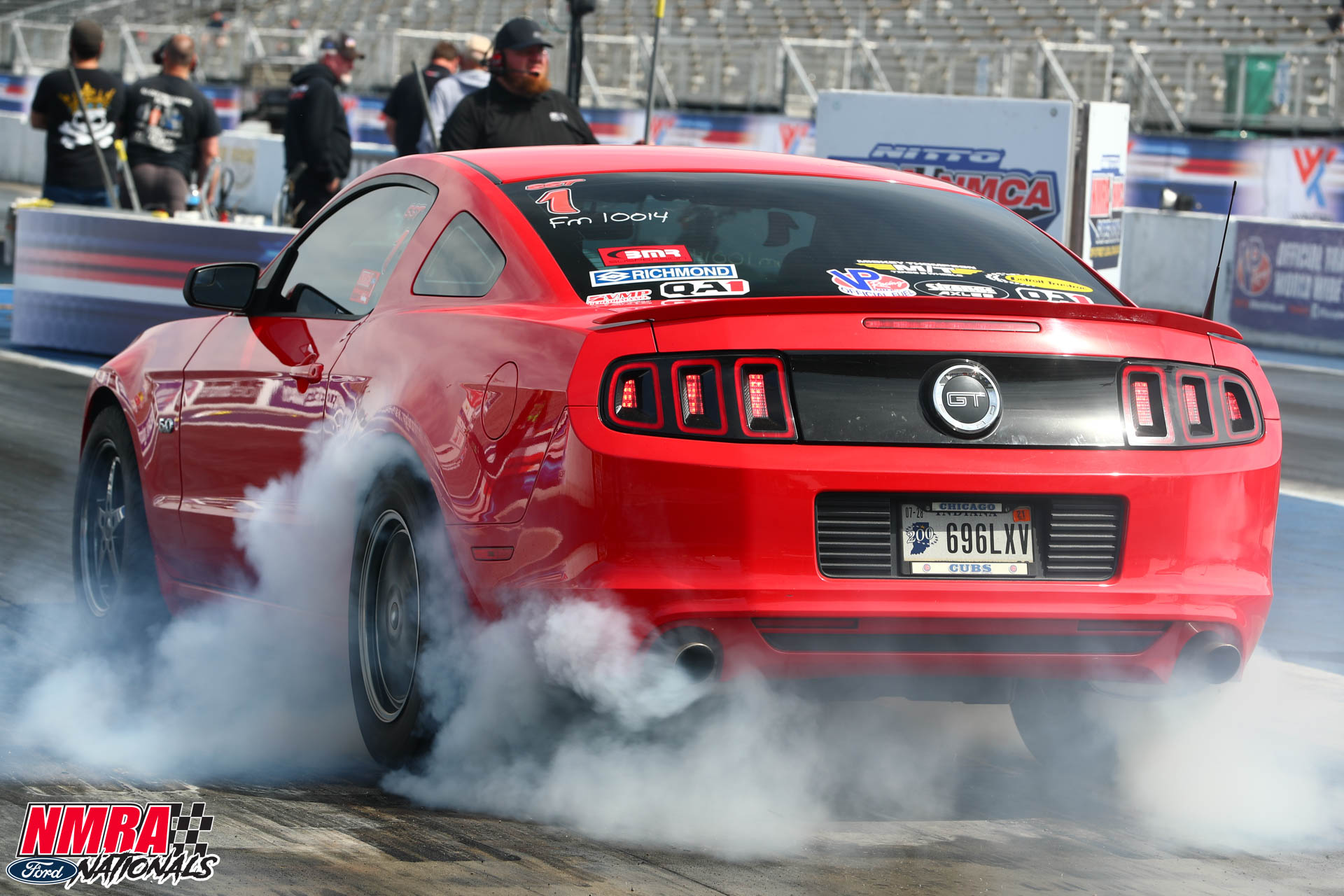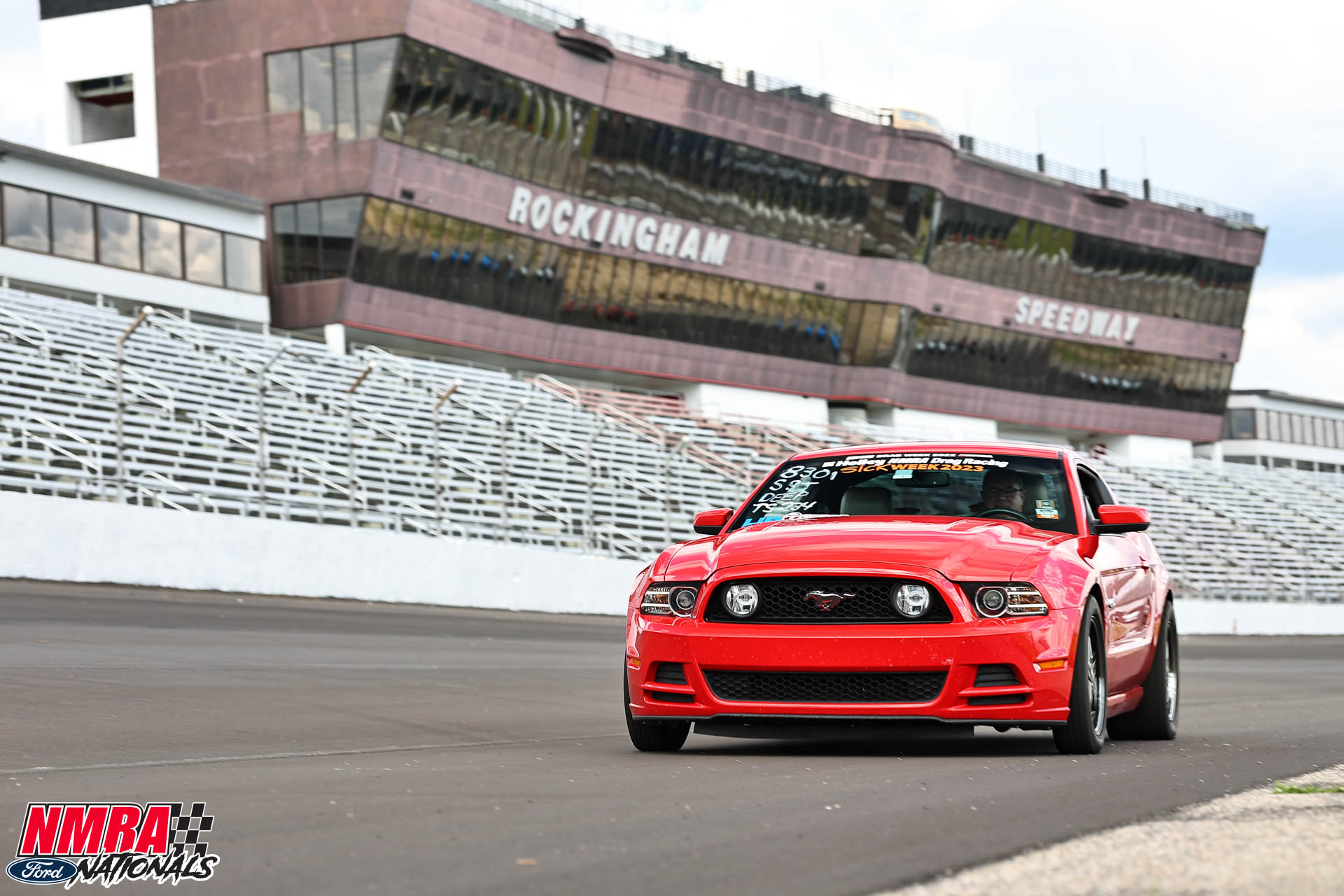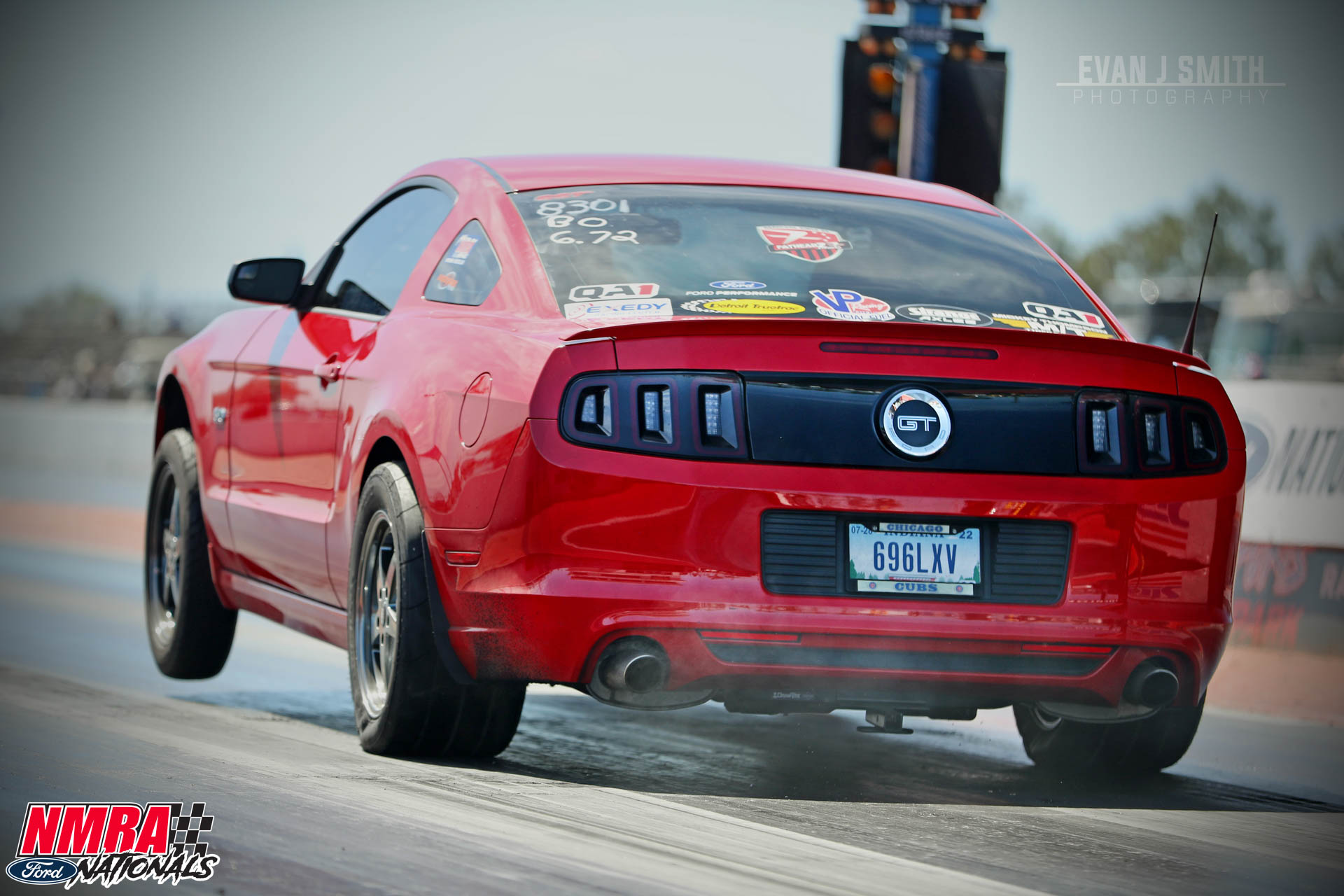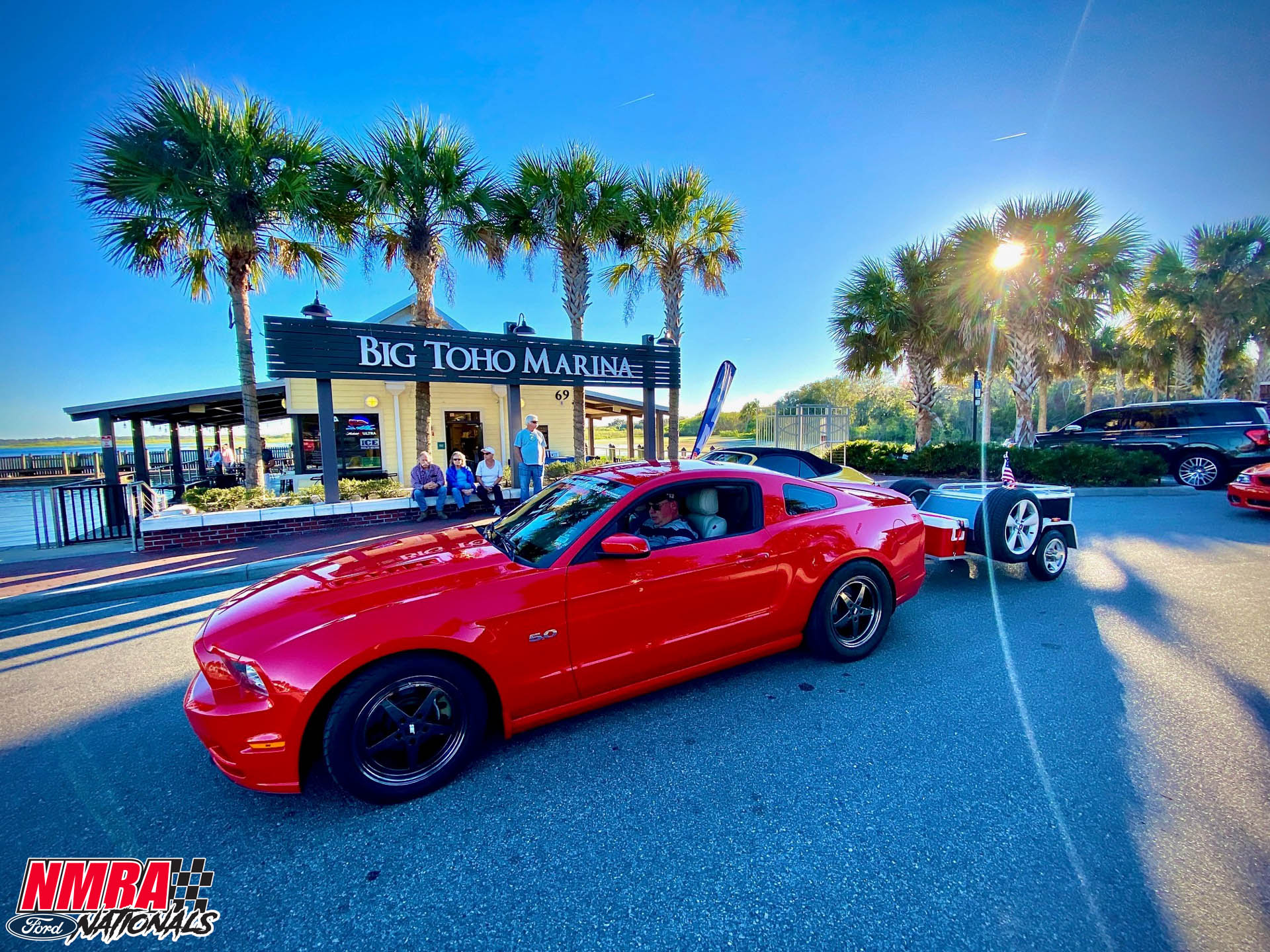10-Second Championship-Winning Daily Driver
By Kevin McKenna
Not too many years ago, the mere thought of a daily driven 10-second street car was far-fetched—but these days it’s not only possible, but fairly easy to do.
In 2018, I set out to prove the point that someone with limited mechanical skills (very limited, actually), a modest budget and no truck and trailer to rely on, could build a fast and reliable street car that would also be competitive in a variety of drag racing classes, including several in the Holley NMRA and Red Line Oil NMCA Drag Racing series. This story is a recap of my efforts and a template for anyone young or old, skilled or not, who would like to enjoy the thrill of running solid 10s at 135-plus mph, potentially win races and championships and have tons of fun in the process.
In that time, the Mustang has run hundreds of 10-second passes, and been driven all over the eastern United States. In fact, Six years and two NMRA championships later, I’d like to think most of the boxes have been checked. In fact, along with the two NMRA championships, I’ve competed in both Hot Rod Drag Week and Sick Week multiple times each, plus I’ve participated in local racing and car shows, too. And mind you, the car is driven to and from every event from my home in Indianapolis, as I don’t own a trailer. Oh, and my wife even drove the Mustang to a win in the NMRA All-Female True Street event last year at Bowling Green, Ky.
While costs, both monetary and time, are real and traceable, the amount of fun and enjoyment this project has produced cannot be measured. Far too many racers get lured into by the thrill of quick elapsed time, only to be out of the sport after they’ve exhausted too much time and money. A project like this will keep you racing for many years to come, even if you’re not running 8s or 7s.
Getting Started
To provide a little background, we got this project going with a bone stock 2014 Mustang GT that your author purchased used with roughly 20,000 miles on the odometer. With the OE 5.0 Coyote and sticky tires, it ran 12.60s the first year I raced it.
The first real mod was perhaps the biggest, a TVS-style supercharger from VMP Performance in New Smyrna Beach, Fla. Over time, we’ve added complimentary aftermarket parts designed for both safety and performance. Those mods include a carbon fiber driveshaft and double-adjustable rear shocks from QA-1, an FTI torque converter, BMR rear suspension components, a JMS Pedal Max, Stiffler’s driveshaft loop, and of course, a set of sticky drag radial tires from Mickey Thompson. As a side note, the Mustang still uses factory exhaust headers and mufflers, which makes it quiet for those long drives to the races.
With a bit of tuning, and a lot of advice and guidance from knowledgeable people, we have been able to accomplish our list goals (and then some). Performance wise, the car dipped immediately into the 10s during the first outing with the addition of the supercharger and rear tires. Literally, within days of the supercharger install, we ran 10.79 with a top speed of 126 mph. That was a great start, which actually met the goal of running 10s with a simple combo.
Since the beginning of the project, we’ve put forth the time and effort to not only make the car quicker, but also more consistent. A 10-second street car is one thing, but we also wanted a Mustang that could hold its own in an E.T. bracket or index environment.
An aftermarket torque converter was a big step, and more recently, fuel system upgrades have provided additional power without sacrificing drivability. Currently, we can easily go from pump gas to E85 fuel thanks to HP Tuners.
Today, the car is capable of consistent 1.40 60-foot times, very low 10-second performances (best has been 10.07) and top speeds of over 137 mph. And the 5.0L Ford still gets 22-mpg cruising down the highway with air conditioning and XM Satellite radio!
While most people are impressed by the performance of the car, it’s important not to overlook its reliability. Since the installation of the supercharger, we’ve added more than 40,000 highway miles with the odometer now topping 61,000 (mostly) trouble free miles.
There have been a few glitches along the way, but they’ve been minor and few and far between. The initial build included a Ford Performance Cobra Jet throttle body, which ultimately proved to be a bit finicky for street use, so it was eventually replaced with a twin 65 mm unit from Ford Performance that has since been trouble-free.
More recently, the rear end required a significant amount of attention. As it turns out, 400 quarter mile runs with 60-foot times as low as 1.42-second (in a 4,000-lb.-plus Mustang), was too much for a mostly stock unit. The addition of an Eaton Tru-Trac, Richmond Gears, and Strange axles have helped provide peace of mind going forward.
So What’s Next for the Mustang?
After winning a pair of events and the HP Tuners Super Stang title in 2023, one can’t help but wonder if it’s perhaps time for a new challenge. To that end, it seems the stars have aligned perfectly with the introduction of the all-new Whatever It Takes Transmission Street Bandit 10.10 class, which debuted as a championship category at the recently held NMRA Spring Break Shootout.
To be competitive in the WIT Street Bandit class, I’ll need a car that can run 10.10—and right now we don’t have one. Yes, the car has run a best of 10.07, but that was in premium weather conditions, and we can’t always count on that. There is also the not-so-small matter of the .400 Pro Tree.
For me to be competitive on a .400 Pro Tree, I’ll need to deep stage, which is going to kill another .15-second. So, in order to be taken seriously in Street Bandit, I’ll need to have a car that is capable of running into the 9s under almost any conditions. Fortunately, most of the mods necessary to get us there aren’t complicated or overly expensive. The E85 tune represents a big horsepower increase and we’ve just scratched the surface of its potential.
A smaller supercharger pulley and a trunk-mounted ice tank from Lethal Performance are a big help and should allow us to achieve our lofty goals. Once the car is capable of 9-second time slips, it’s a fairly straightforward process to secure a NHRA Category 7 license. If all goes according to plan, that should happen sometime this spring.
The bottom line is that if I can do this, almost anyone else should be able to. The parts are readily available and can often be found at a discount if you look hard enough. It’s even easier if you’re capable of doing all, or most of, the work yourself, which is an advantage that I don’t have (as anyone who’s seen me with a wrench can tell you).
Lastly, and as we’ve often stated, the only thing more fun than watching an NMRA or NMCA event as a spectator is participating in one—so whether it’s your stock Ford or a built racer, get out there and race!
By Kevin McKenna
Not too many years ago, the mere thought of a daily driven 10-second street car was far-fetched—but these days it’s not only possible, but fairly easy to do.
In 2018, I set out to prove the point that someone with limited mechanical skills (very limited, actually), a modest budget and no truck and trailer to rely on, could build a fast and reliable street car that would also be competitive in a variety of drag racing classes, including several in the Holley NMRA and Red Line Oil NMCA Drag Racing series. This story is a recap of my efforts and a template for anyone young or old, skilled or not, who would like to enjoy the thrill of running solid 10s at 135-plus mph, potentially win races and championships and have tons of fun in the process.
In that time, the Mustang has run hundreds of 10-second passes, and been driven all over the eastern United States. In fact, Six years and two NMRA championships later, I’d like to think most of the boxes have been checked. In fact, along with the two NMRA championships, I’ve competed in both Hot Rod Drag Week and Sick Week multiple times each, plus I’ve participated in local racing and car shows, too. And mind you, the car is driven to and from every event from my home in Indianapolis, as I don’t own a trailer. Oh, and my wife even drove the Mustang to a win in the NMRA All-Female True Street event last year at Bowling Green, Ky.
While costs, both monetary and time, are real and traceable, the amount of fun and enjoyment this project has produced cannot be measured. Far too many racers get lured into by the thrill of quick elapsed time, only to be out of the sport after they’ve exhausted too much time and money. A project like this will keep you racing for many years to come, even if you’re not running 8s or 7s.
Getting Started
To provide a little background, we got this project going with a bone stock 2014 Mustang GT that your author purchased used with roughly 20,000 miles on the odometer. With the OE 5.0 Coyote and sticky tires, it ran 12.60s the first year I raced it.
The first real mod was perhaps the biggest, a TVS-style supercharger from VMP Performance in New Smyrna Beach, Fla. Over time, we’ve added complimentary aftermarket parts designed for both safety and performance. Those mods include a carbon fiber driveshaft and double-adjustable rear shocks from QA-1, an FTI torque converter, BMR rear suspension components, a JMS Pedal Max, Stiffler’s driveshaft loop, and of course, a set of sticky drag radial tires from Mickey Thompson. As a side note, the Mustang still uses factory exhaust headers and mufflers, which makes it quiet for those long drives to the races.
With a bit of tuning, and a lot of advice and guidance from knowledgeable people, we have been able to accomplish our list goals (and then some). Performance wise, the car dipped immediately into the 10s during the first outing with the addition of the supercharger and rear tires. Literally, within days of the supercharger install, we ran 10.79 with a top speed of 126 mph. That was a great start, which actually met the goal of running 10s with a simple combo.
Since the beginning of the project, we’ve put forth the time and effort to not only make the car quicker, but also more consistent. A 10-second street car is one thing, but we also wanted a Mustang that could hold its own in an E.T. bracket or index environment.
An aftermarket torque converter was a big step, and more recently, fuel system upgrades have provided additional power without sacrificing drivability. Currently, we can easily go from pump gas to E85 fuel thanks to HP Tuners.
Today, the car is capable of consistent 1.40 60-foot times, very low 10-second performances (best has been 10.07) and top speeds of over 137 mph. And the 5.0L Ford still gets 22-mpg cruising down the highway with air conditioning and XM Satellite radio!
While most people are impressed by the performance of the car, it’s important not to overlook its reliability. Since the installation of the supercharger, we’ve added more than 40,000 highway miles with the odometer now topping 61,000 (mostly) trouble free miles.
There have been a few glitches along the way, but they’ve been minor and few and far between. The initial build included a Ford Performance Cobra Jet throttle body, which ultimately proved to be a bit finicky for street use, so it was eventually replaced with a twin 65 mm unit from Ford Performance that has since been trouble-free.
More recently, the rear end required a significant amount of attention. As it turns out, 400 quarter mile runs with 60-foot times as low as 1.42-second (in a 4,000-lb.-plus Mustang), was too much for a mostly stock unit. The addition of an Eaton Tru-Trac, Richmond Gears, and Strange axles have helped provide peace of mind going forward.
So What’s Next for the Mustang?
After winning a pair of events and the HP Tuners Super Stang title in 2023, one can’t help but wonder if it’s perhaps time for a new challenge. To that end, it seems the stars have aligned perfectly with the introduction of the all-new Whatever It Takes Transmission Street Bandit 10.10 class, which debuted as a championship category at the recently held NMRA Spring Break Shootout.
To be competitive in the WIT Street Bandit class, I’ll need a car that can run 10.10—and right now we don’t have one. Yes, the car has run a best of 10.07, but that was in premium weather conditions, and we can’t always count on that. There is also the not-so-small matter of the .400 Pro Tree.
For me to be competitive on a .400 Pro Tree, I’ll need to deep stage, which is going to kill another .15-second. So, in order to be taken seriously in Street Bandit, I’ll need to have a car that is capable of running into the 9s under almost any conditions. Fortunately, most of the mods necessary to get us there aren’t complicated or overly expensive. The E85 tune represents a big horsepower increase and we’ve just scratched the surface of its potential.
A smaller supercharger pulley and a trunk-mounted ice tank from Lethal Performance are a big help and should allow us to achieve our lofty goals. Once the car is capable of 9-second time slips, it’s a fairly straightforward process to secure a NHRA Category 7 license. If all goes according to plan, that should happen sometime this spring.
The bottom line is that if I can do this, almost anyone else should be able to. The parts are readily available and can often be found at a discount if you look hard enough. It’s even easier if you’re capable of doing all, or most of, the work yourself, which is an advantage that I don’t have (as anyone who’s seen me with a wrench can tell you).
Lastly, and as we’ve often stated, the only thing more fun than watching an NMRA or NMCA event as a spectator is participating in one—so whether it’s your stock Ford or a built racer, get out there and race!



